Disclaimer
Alfred Henry Maurer
American Modernist Painter
1868 - 1932
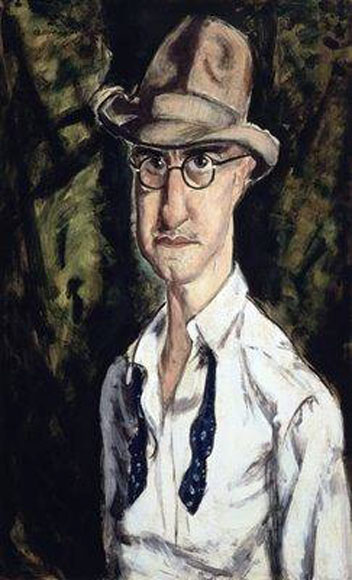
Self-Portrait of Alfred Henry Maurer
Alfred Henry Maurer was an American modernist painter. He exhibited his work in avant-garde circles internationally and in New York City during the early 20th century.
Maurer was born in New York City. He was the son of German-born Louis Maurer, a lithographer. At age sixteen, Maurer quit school to work at his father's lithographic firm. In 1897, after studying with the sculptor John Quincy Adams Ward and painter William Merritt Chase, Maurer left for Paris where he stayed the next four years, joining a circle of American and French artists. At the time, Maurer's style was realist.
His painting An Arrangement, received first prize at the 1901 Carnegie International Exhibition. Other awards received by Maurer included the Inness Jr. prize of the Salmagundi Club in 1900 and a bronze medal at the Pan-American Exposition at Buffalo, New York in 1901. In 1905 he won the third medal at the Liege (Belgium) Exposition and a gold medal at the International Exposition in Munich.
An Arrangement: 1901
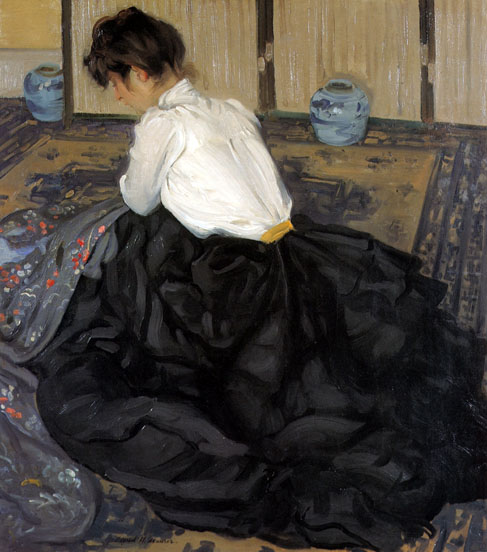
Briefly returning to New York, determined to show his skeptical father that he could paint, Maurer painted what arguably is his most famous painting "An Arrangement," using a woman next door as a model and completing the work (on a borrowed piece of cardboard) in a matter of mere hours.
Some Early Paintings of Mauer
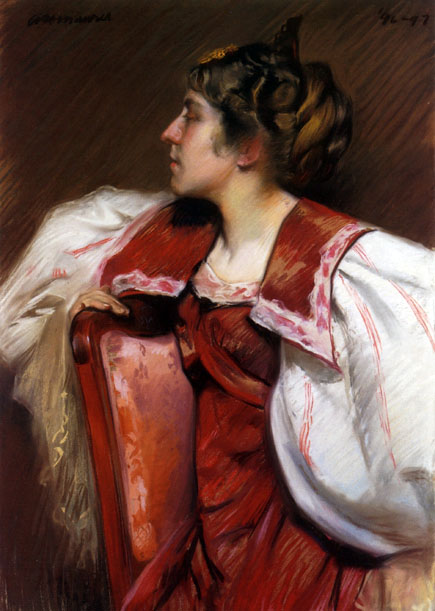
Eugenia Maurer: 1897
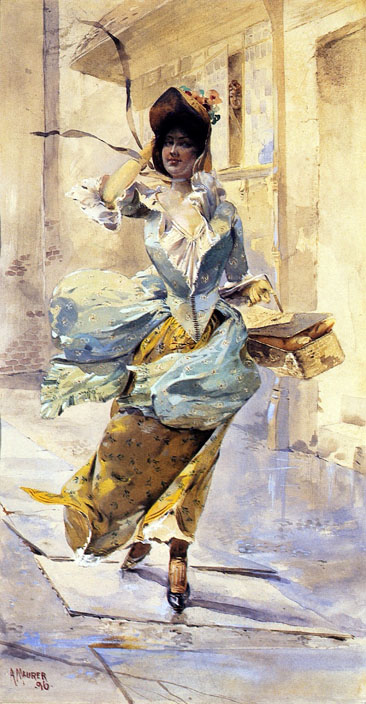 Figure Study: 1896
Figure Study: 1896
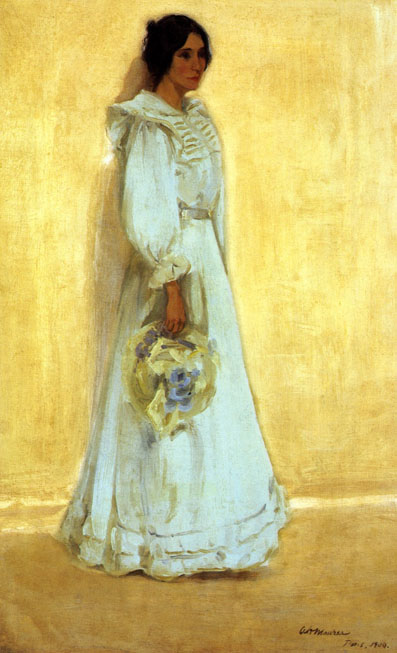
Figure Study: 1900
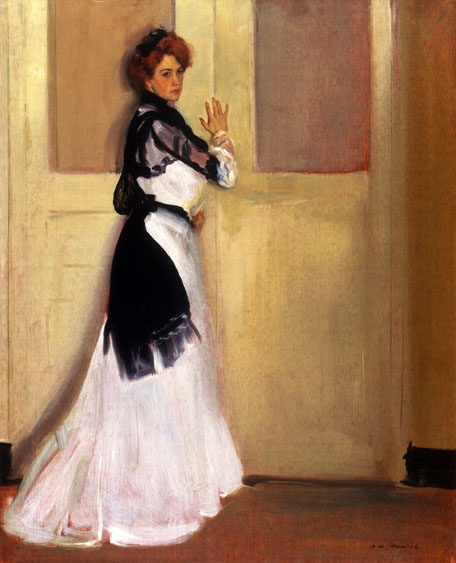
Girl in White: ca 1901
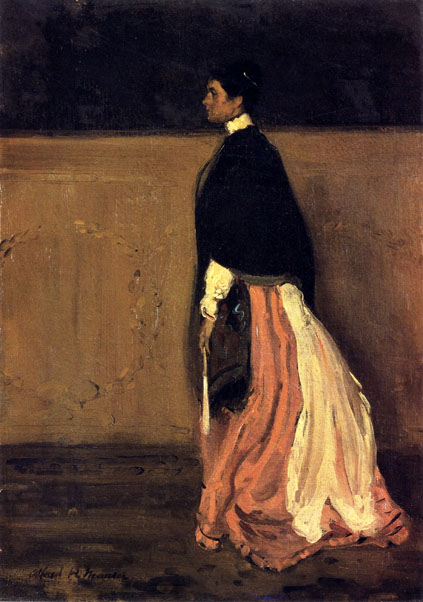
Figure of a Woman: ca 1902
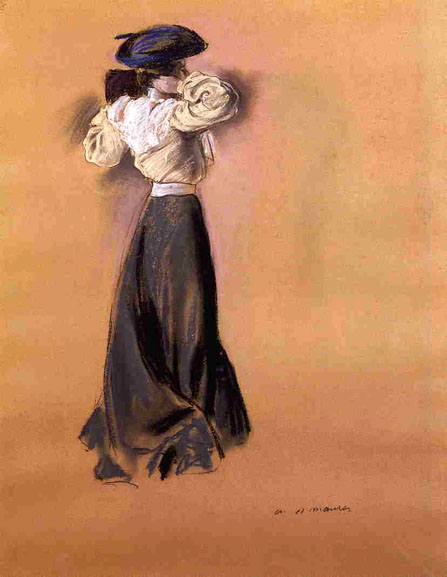
Woman in a Blue Hat: ca 1900

Woman in Pink: Portrait of Roselle Fitzpatrick - 1902
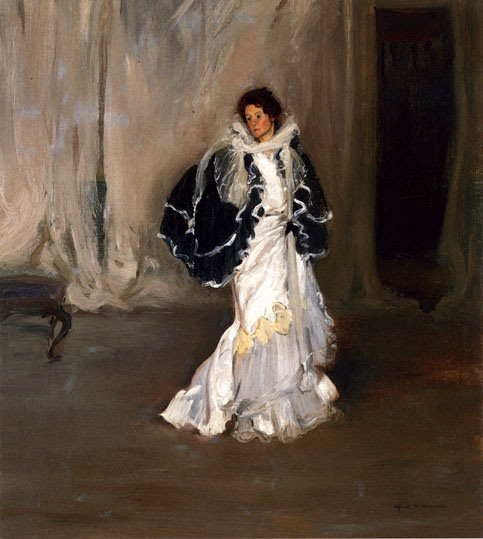
The Black Cape: ca 1901-04
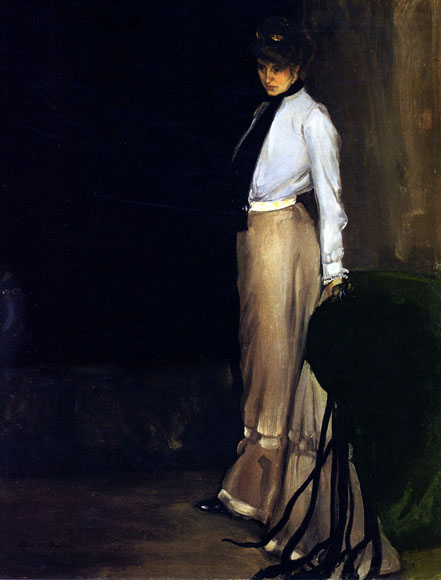 The Model: ca 1902
The Model: ca 1902
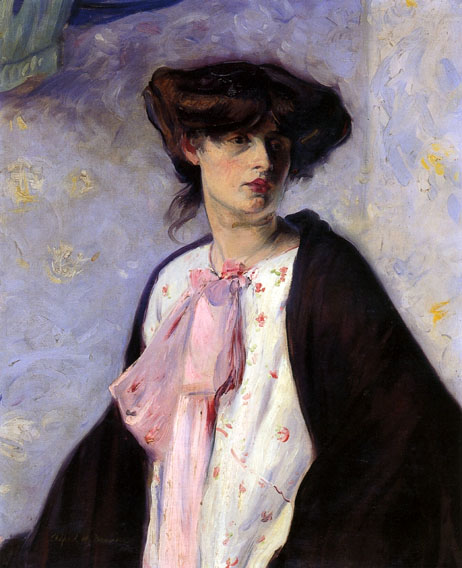
Woman with a Pink Bow
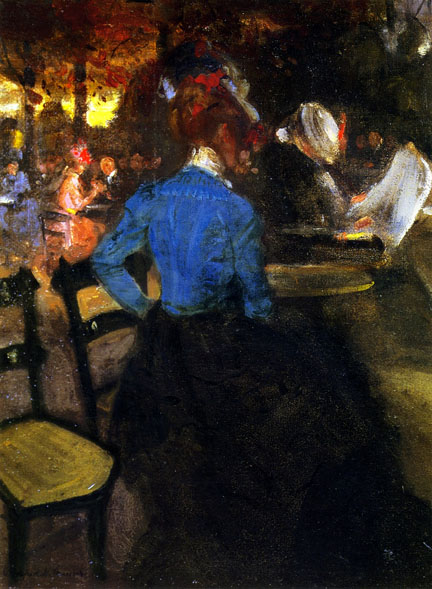 The Cafe: 1900
The Cafe: 1900
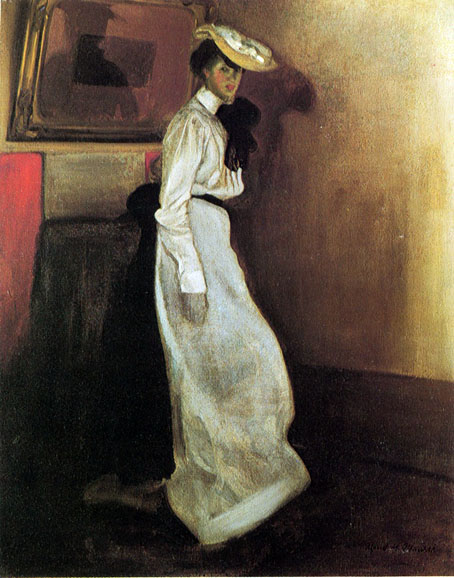
Jeanne in Interior: ca 1901-05
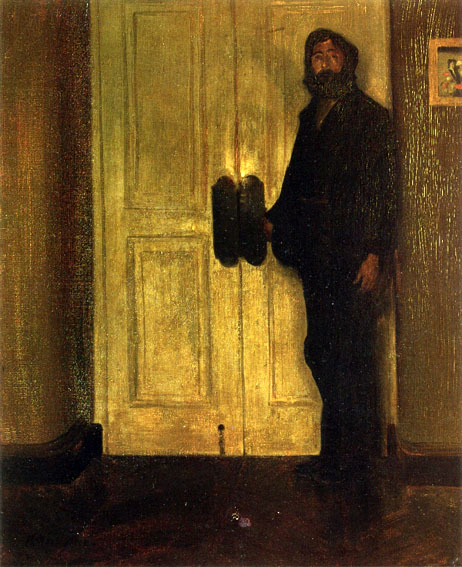
Man at the Door: Umkmown Date
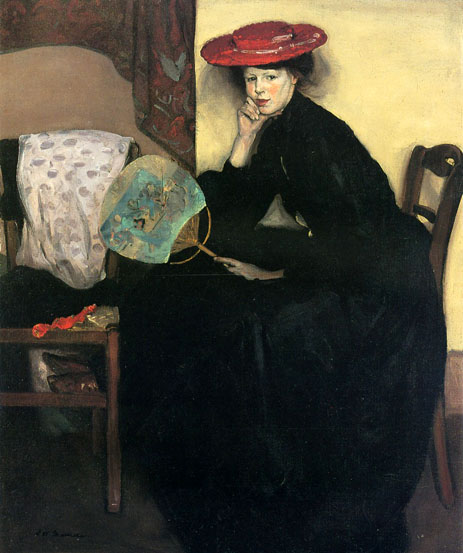
Model with a Japanese Fan: Unknown Date
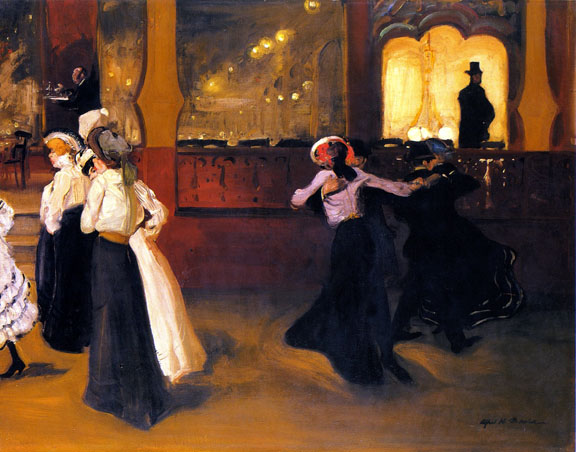
La Bal Bullier: 1900-01
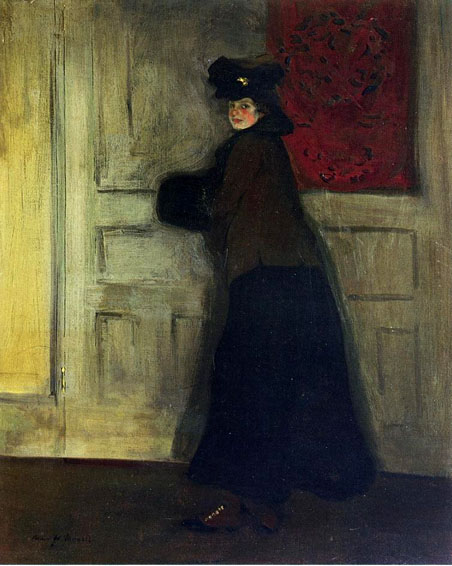
Lady with Muff: ca 1904
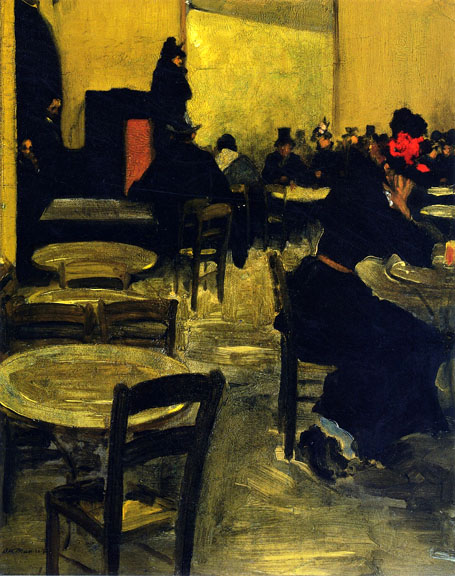
Cafe in Paris: ca 1901
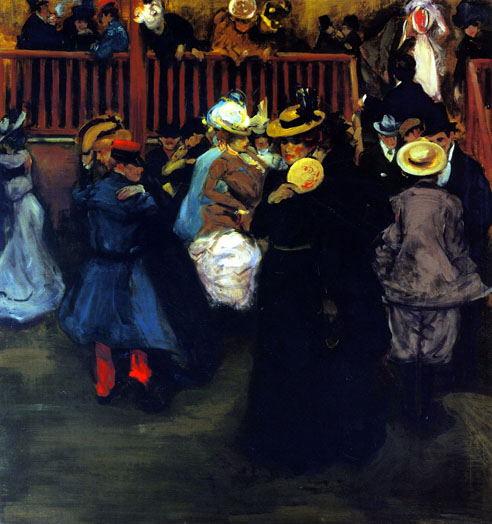
Cafe Scene: ca 1904

Figures by the Sea: ca 1901
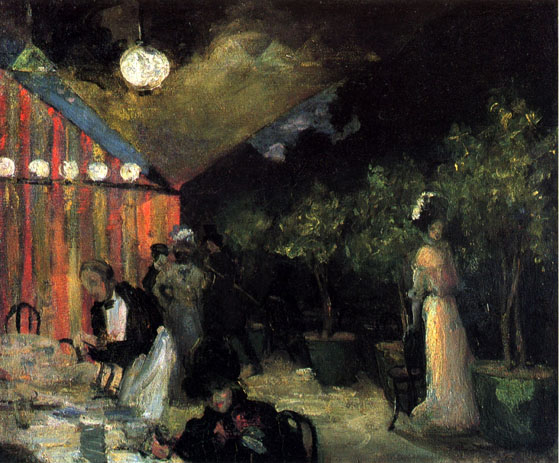
Paris Cafe: ca 1904
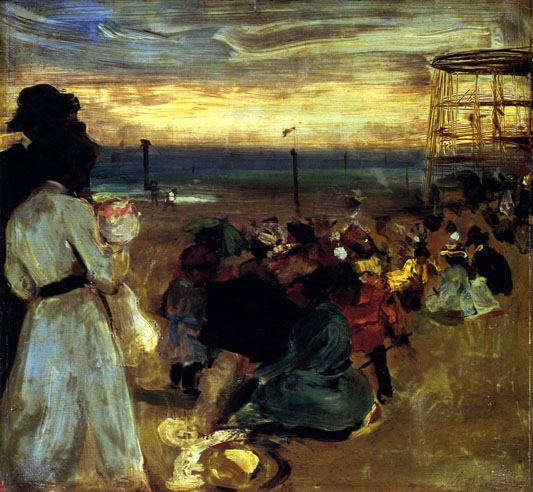
Rockaway Beach: ca 1901
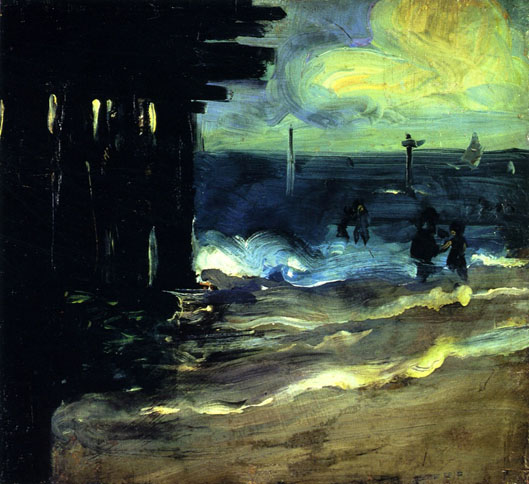
Rockaway Beach with Pier: ca 1901

Seated Woman: 1902-04
At age thirty-six, in Paris, deviating from what everyone (including himself) called "acceptable" painting styles, Maurer changed his methods sharply and from that point on painted only in the cubist and fauvist manner, subsequently risking his international reputation. An important early American avant-garde painter in 1909 he had a two-man exhibition with John Marin in New York City at the 291 Gallery. Four of his paintings were included in the Armory Show of 1913.
Leaving Paris shortly before World War I, he returned to his father's house only to be denied support. For the next seventeen years Maurer painted in a garret in his father's house and was able to gain no critical acclaim. An American modernist he was friends with many important avant-garde American artists like Arthur Dove, Marsden Hartley, John Marin and others during the early 20th century and until his death in 1932. He participated in important exhibitions held at the Anderson Galleries and others. He also exhibited regularly at the New York based Society of Independent Artists and was elected their director in 1919. In 1924 the New York dealer Erhard Weyhe bought the contents of Maurer's studio and represented the artist for the remainder of his career.
The artist Jerome Myers speaks of him in his autobiography "Artist In Manhattan" (Chapter XXVII: Among My Contemporaries) (1940) "Alfred Maurer, whom I knew casually, had a pleasant personality. After his early talent had brought him a prize at the Carnegie Institute, he went to Paris, where he stayed for years. Through mutual friends, I had often heard of him, and when subsequently I came to Paris, we spent some time together".
There was no doubt that he was happy in his Parisian atmosphere. Like many other young Americans there, he was attracted by the life of the boulevards, the cares, the daily affinity with brother artists with whom he was then studying the problem of color. I found him experimenting with his close friend Eugene Ullman, who had adopted Paris with the same enthusiasm. In his appearance, Alfred Maurer was romantic, gay and debonair, the typical artist seemingly beyond all drab necessity.
Various Works of Alfred Henry Maurer Showing the Changing Style and Influence in his Art
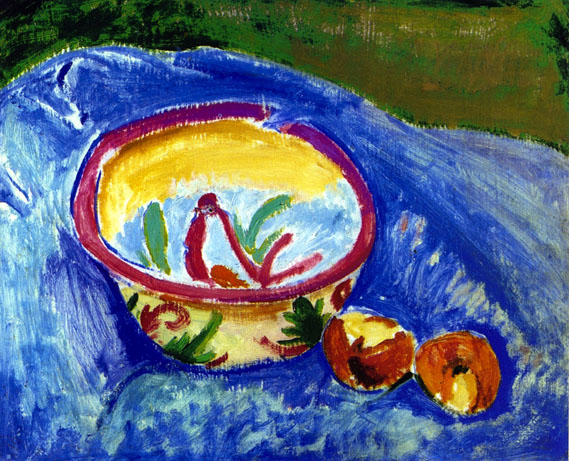
Chicken in a Nest: ca 1908-10
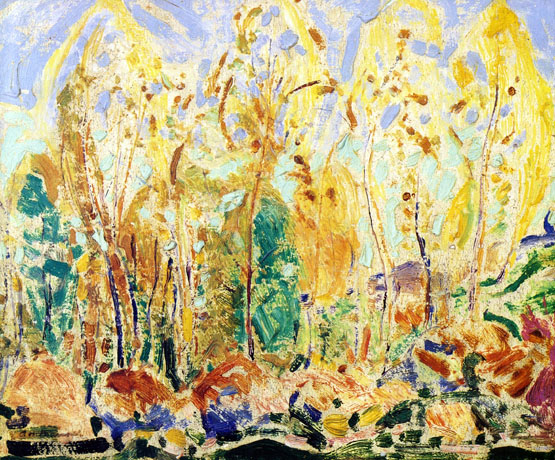
Fauve Landscape: 1907
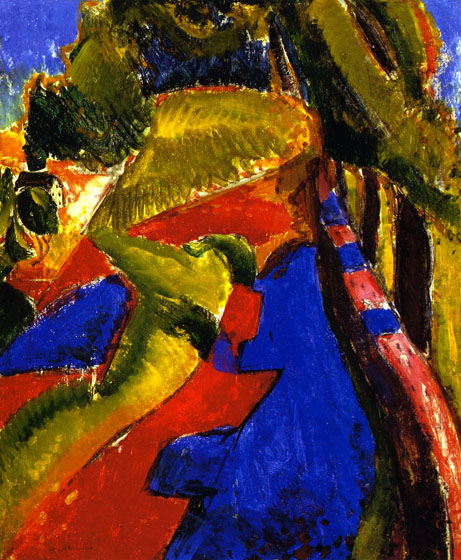
Fauve Landscape with Red and Blue: ca 1906-07
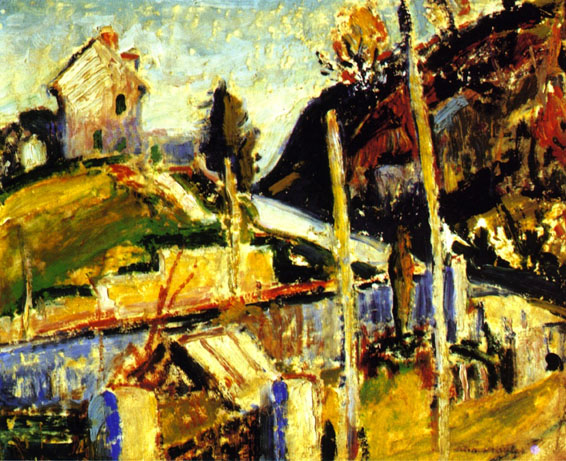
Fauve Landscape: ca 1907-10
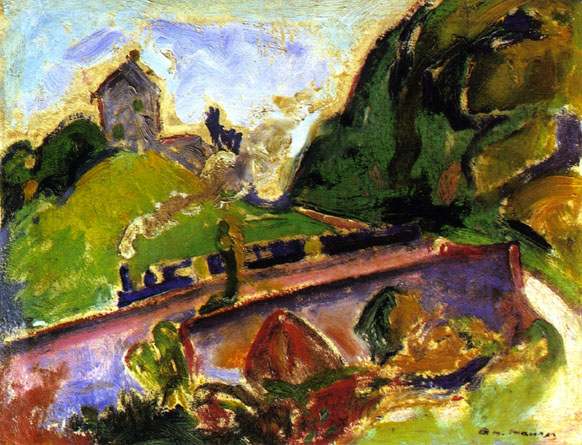
Fauve Landscape with Train: ca 1907
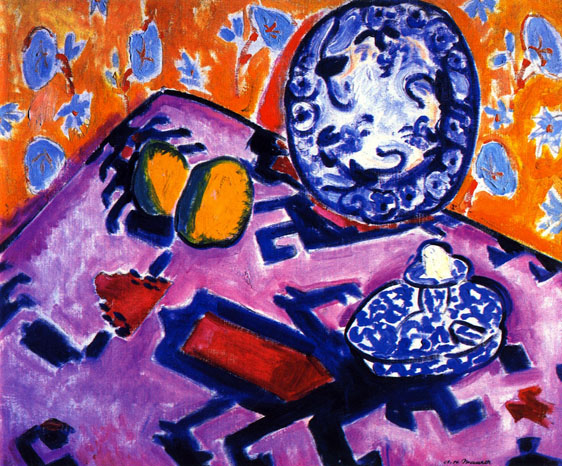
Fauve Still Life: ca 1908-10

Head of a Woman: ca 1908
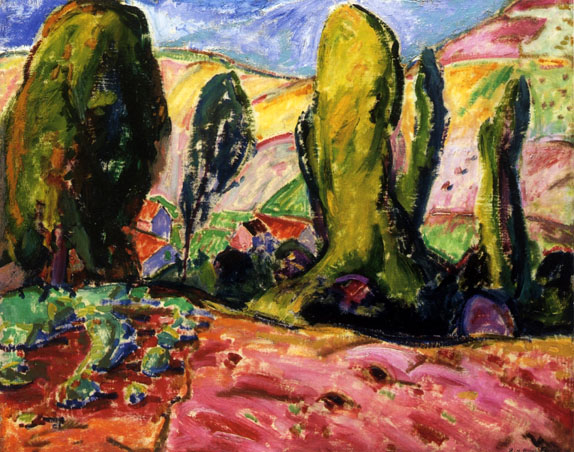
Landscape: 1909
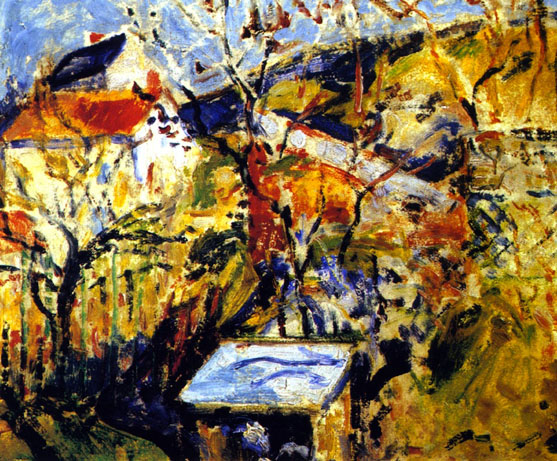
Landscape: ca 1907-10

Landscape with Trees: 1909
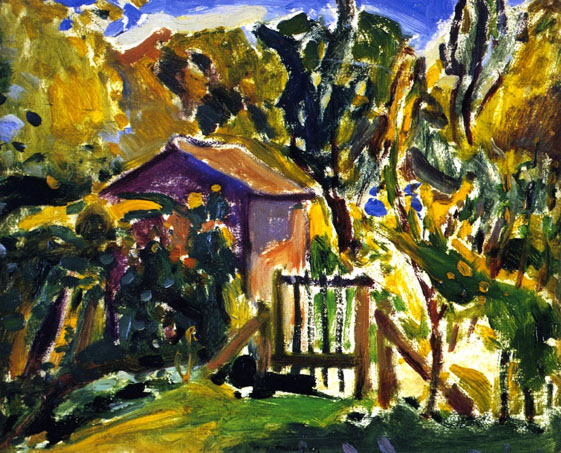
Porte de Ferme: ca 1906-07
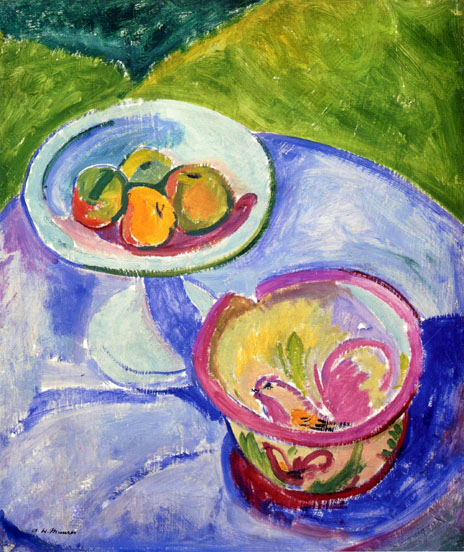
Still Life: 1908

Untitled (aka Landscape): ca 1907
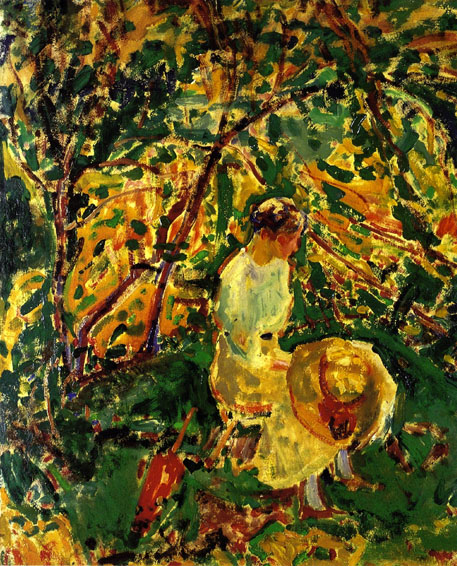
Woman in a Garden: ca 1907
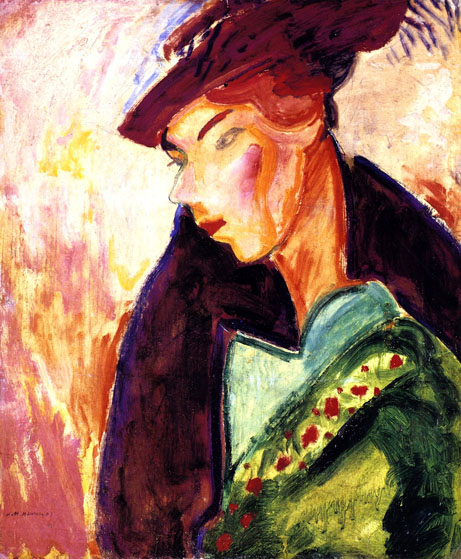
Woman with a Hat: 1907
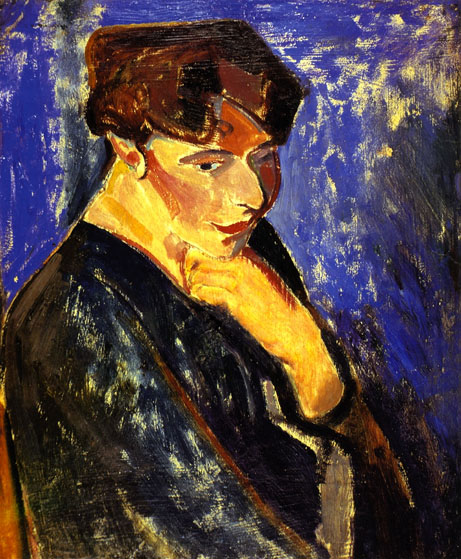
Woman with Blue Background
(aka Portrait of a Woman): ca 1907
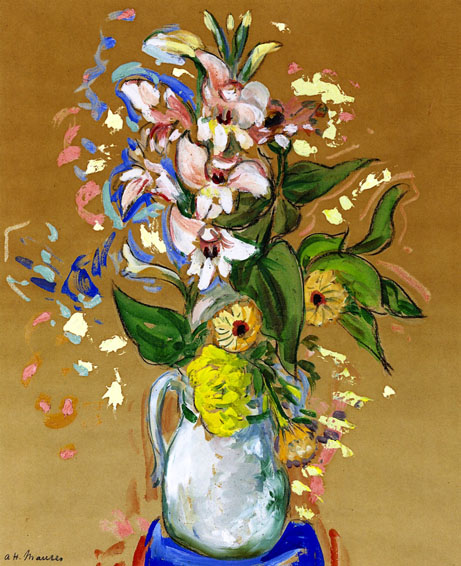
Flowers in a Vase: 1909
"His father, Louis Maurer, was an old-time artist, who had worked on the Currier & Ives lithographs. When I met him at an exhibition of the Independents at the Grand Central Palace, he was a quiet-mannered man, whom I took to be about seventy-five years old. Later I learned that he was then already ninety-five. He told me how surprised he was at the value and vogue attained by the Currier & Ives lithographs, which in his time had been merely ordinary subjects for simple homes, like the vast number of engravings of that period. Speaking of his son, Alfred, he evidently could not sympathize with-or, as he said, understand-the ultra-violets and ultra-blues of that phase of Alfred's work. He seemed so proud of what his son had done, but so grieved at what he was then doing."
More Painting of Alfred Henry Maurer
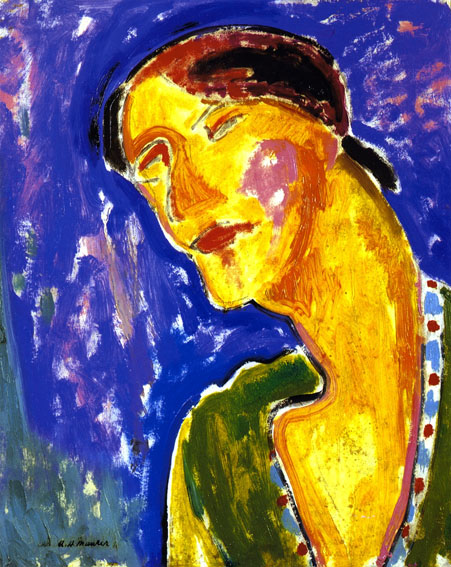
Buste de Femme: 1910
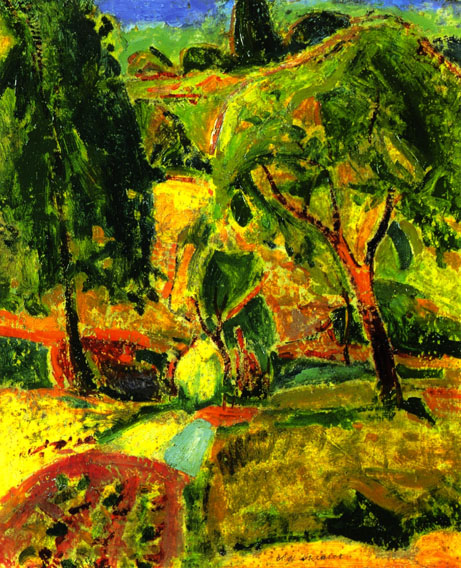
Autumn: ca 1912
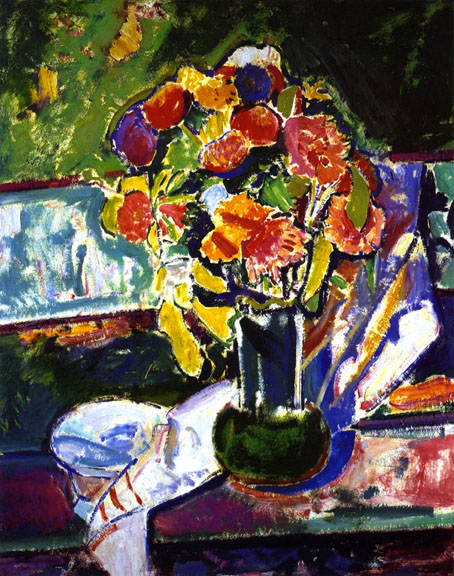
Fauve Still Life: 1910
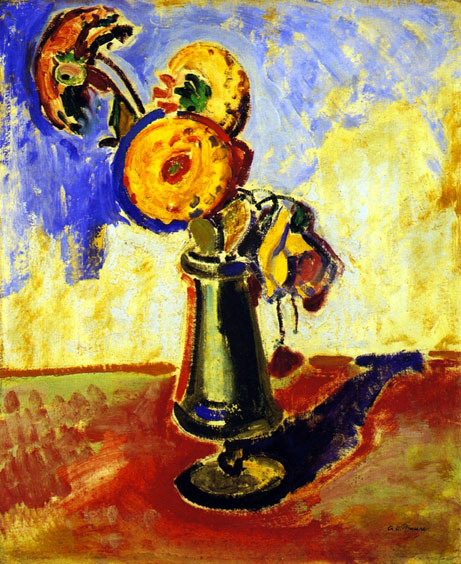
Fauve Still Life of Zinnias: ca 1910
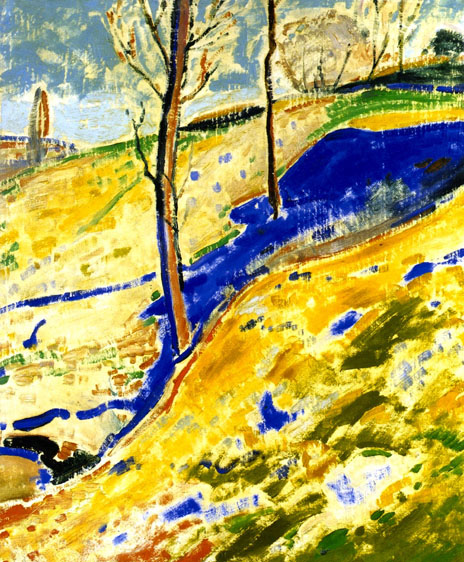
Fauve Landscape: ca 1910-12
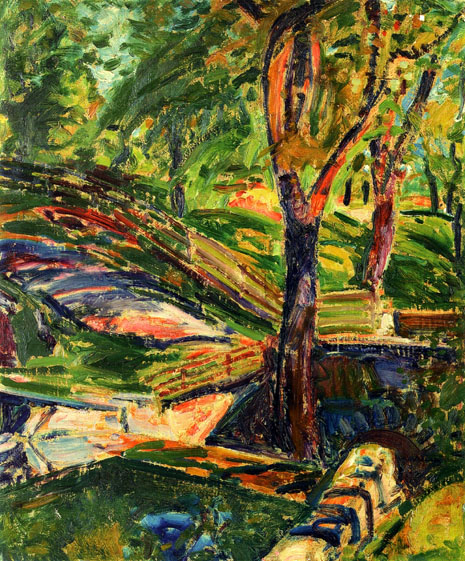
Fenced Landscape: ca 1910-12

Fauve Landscape: ca 1910-12
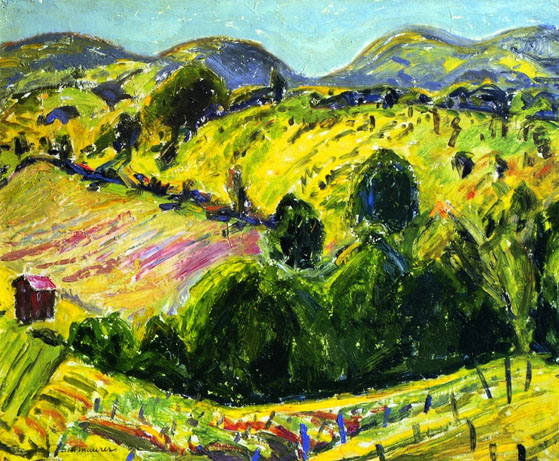
Fauve Landscape with Rolling Hills: ca 1914

Fauve Still Life: 1910
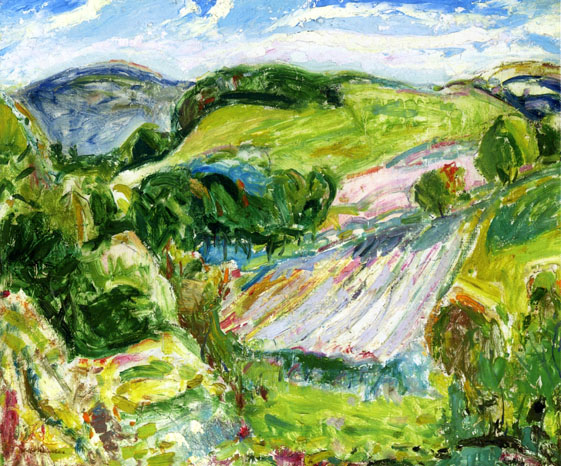
Fields: 1912
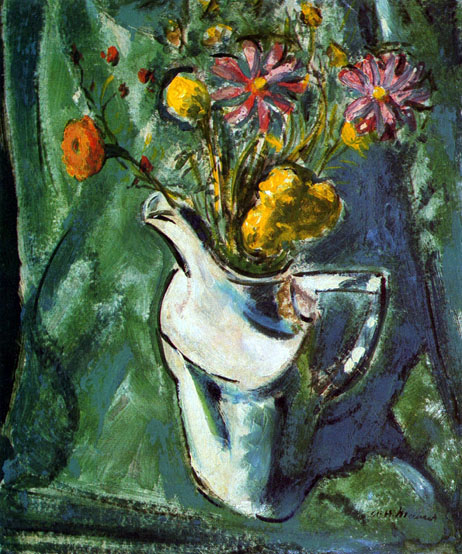
Floral Still Life: ca 1912
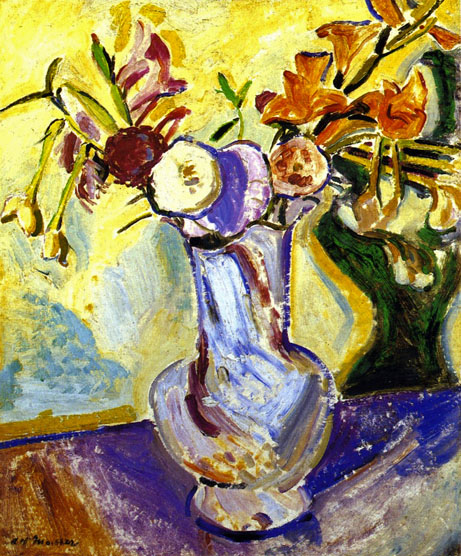
Flowers in a White Vase: ca 1910
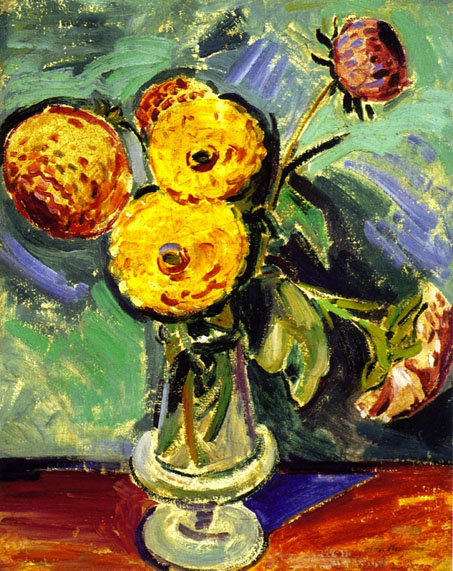
Flowers in Glass Vase: ca 1910

House in a Landscape: ca 1912
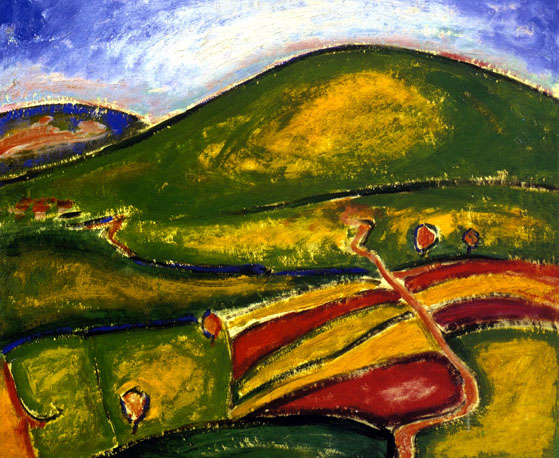
Landscape: ca 1910
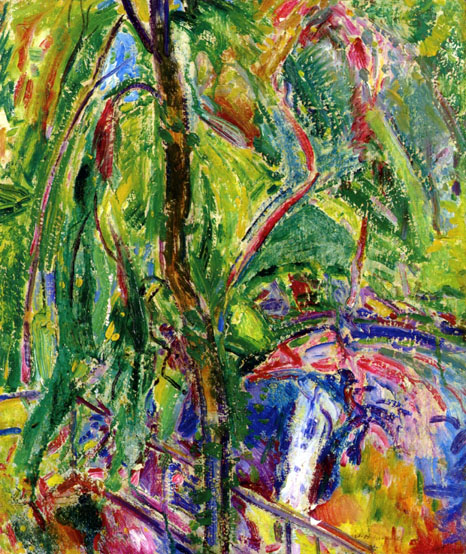
Landscape: 1911

Landscape: 1915-16
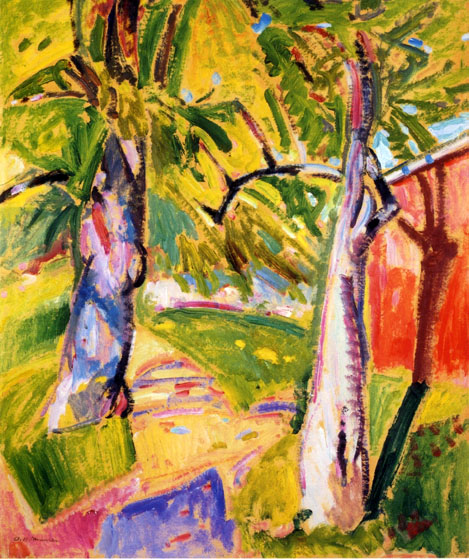
Landscape: 1916
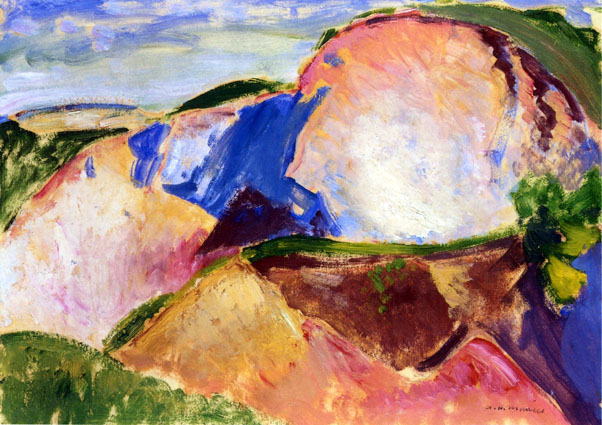
Landscape: 1916-18
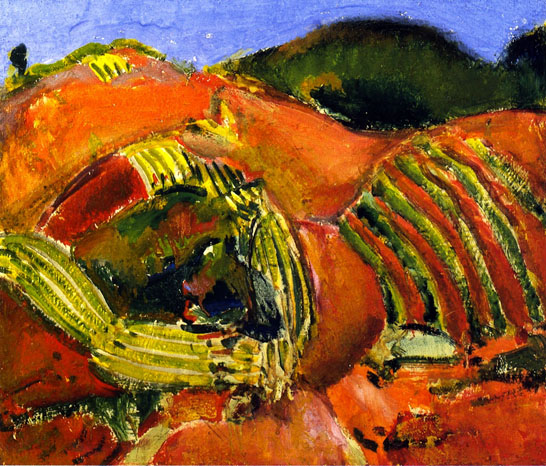
Landscape:ca 1912
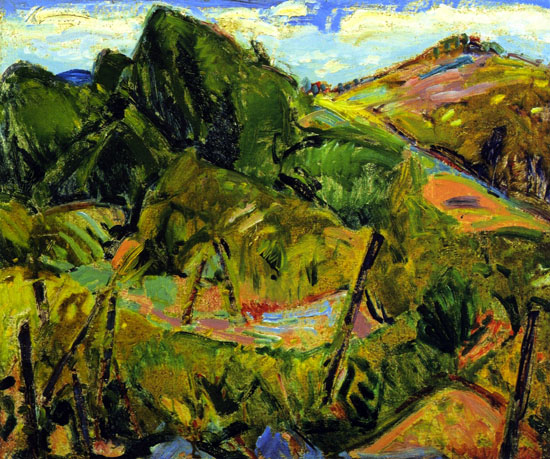
Landscape: ca 1915-19
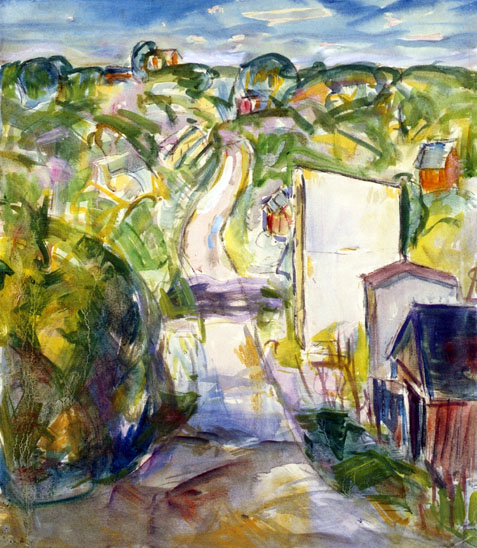
Landscape: ca 1915-24
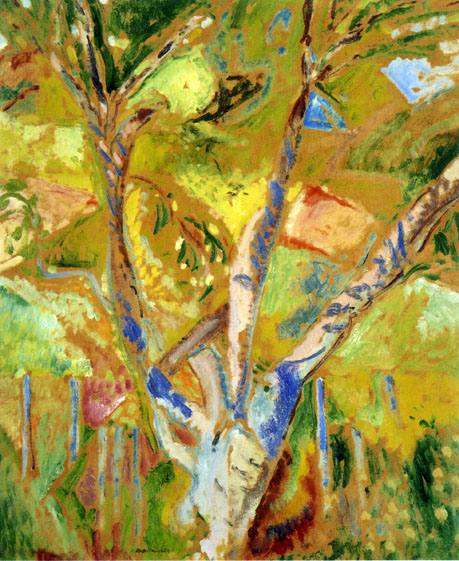
Landscape of Provence: ca 1912-22
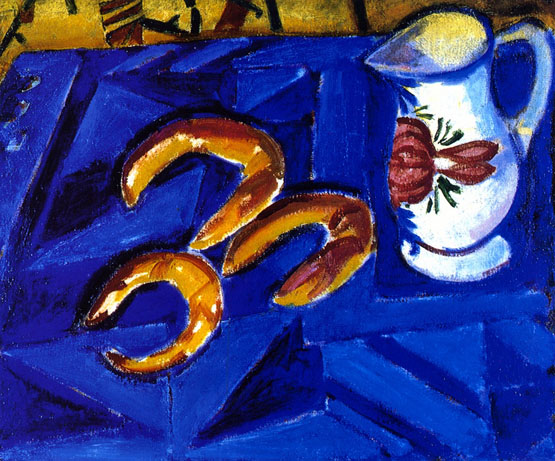
Pitcher with Three Croissants: ca 1912
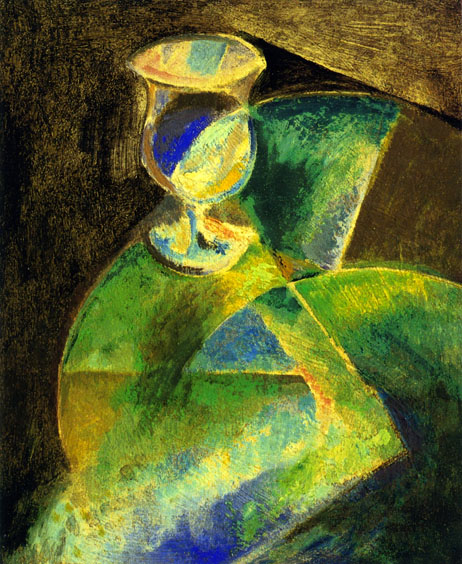
Abstract Still Life: ca 1916-18
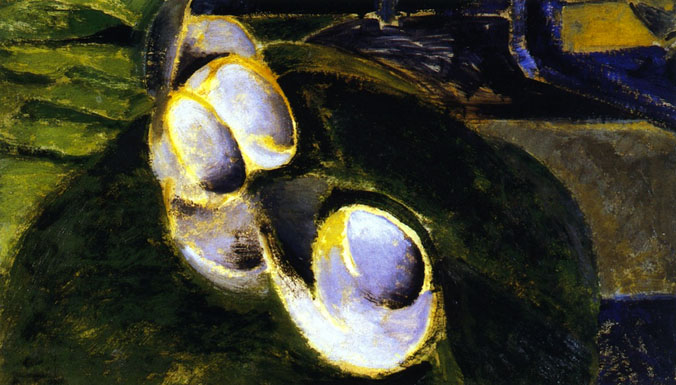
Abstract Still Life with Cups: ca 1919
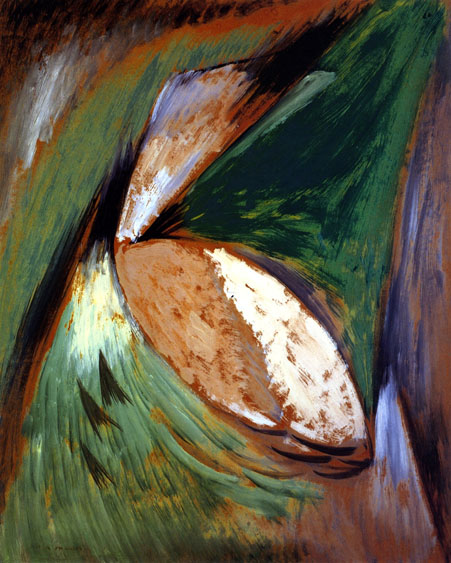
Abstraction Fishing: ca 1919
For some reason, Alfred was subsequently forced to return to New York, leaving behind in Paris his beloved boulevards and the friends of his heart. The idea and the style of his work seemed to change; he turned to the painting of elongated women, after the pattern of Modigliani. Then Louis Maurer, seemingly outraged by his son's work, did an extraordinary thing. He gave an exhibition of his own paintings at the age of one hundred years, a record for all time. Between this unique re-juvenescence of his remarkable father, with the implied reproof against his own art, and the suffering due to ill health, the pit yawned and the unhappy Alfred Maurer left the scene of his sorrows a suicide, his gallant heart broken."
It is extremely difficult to run across any of Maurer's paintings as most of his work is still privately owned.
Maurer took his own life by hanging several weeks after his father's death. At the time of his death, examples of his works were included in the Memorial Hall Museum in Philadelphia, PA, the Phillips Memorial Gallery in Washington, D.C., the Barnes Collection in Merion, PA, and the Whitney Museum of American Art in New York City.
Quoted From: Alfred Henry Maurer - Wikipedia
Work from the Last Two Decades of Alfred Henry Maurer's Life

Abstract Head: ca 1920
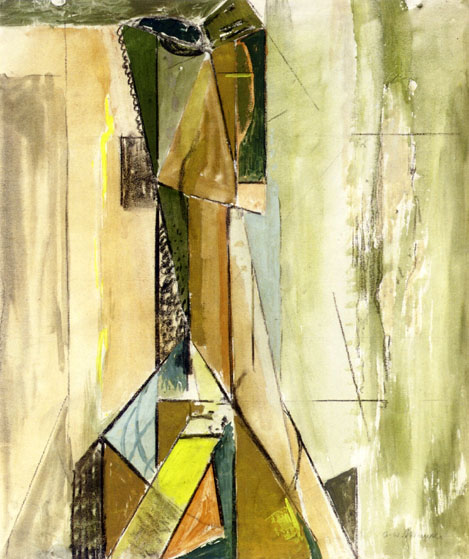
Abstract Head: ca 1930
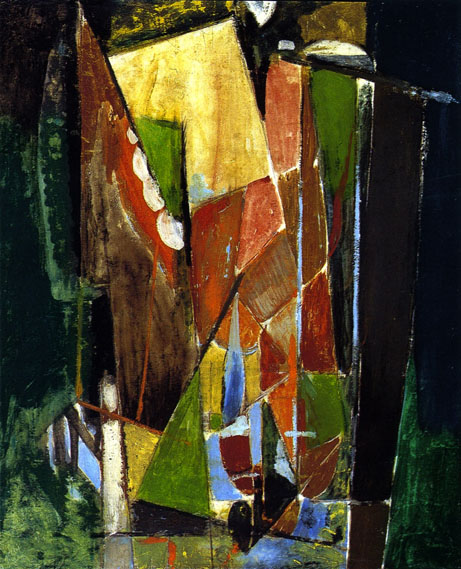
Abstract Portraits - Man and Woman: ca 1930-32
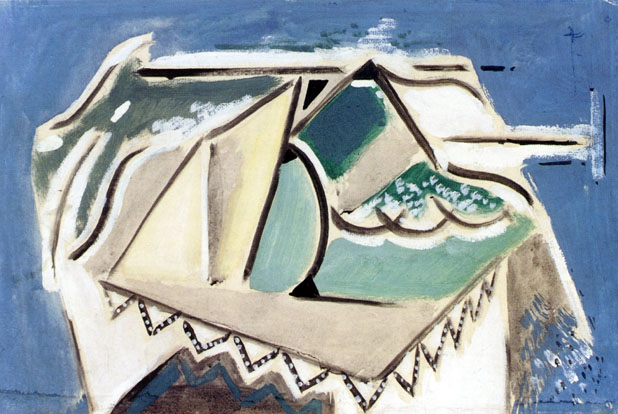
Abstract Still Life Number 2: ca 1928-30
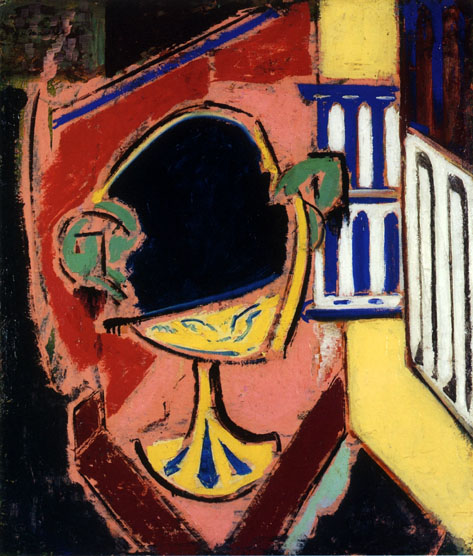
Brass Bowl: ca 1920
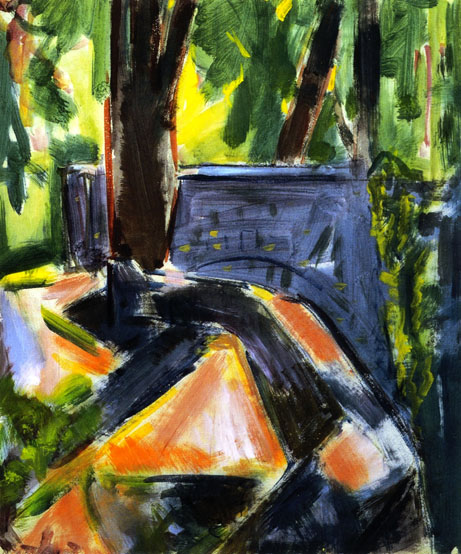
Buckley's Bridge: ca 1926

Brass Bowl: ca 1920
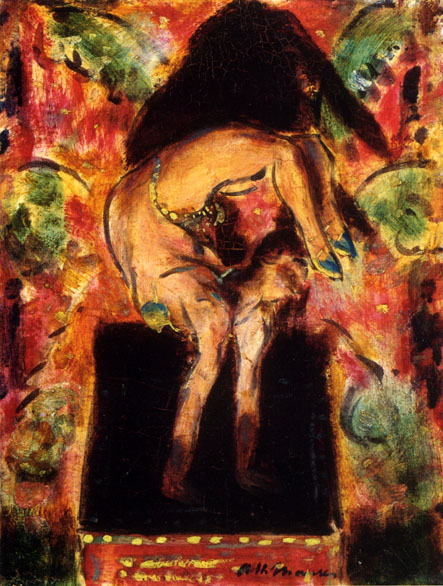
Contortionist: 1927-28
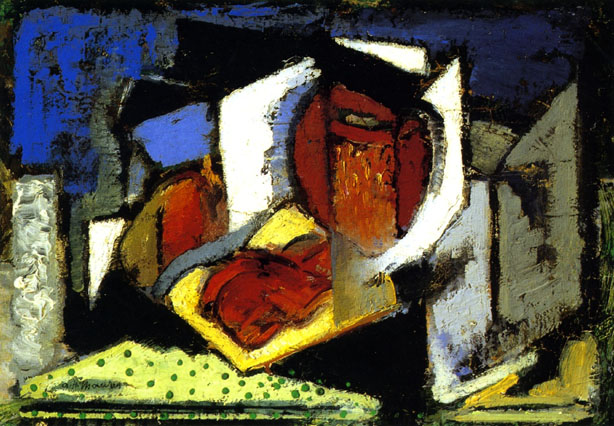
Cubist Still Life with Dolly: ca 1928-32
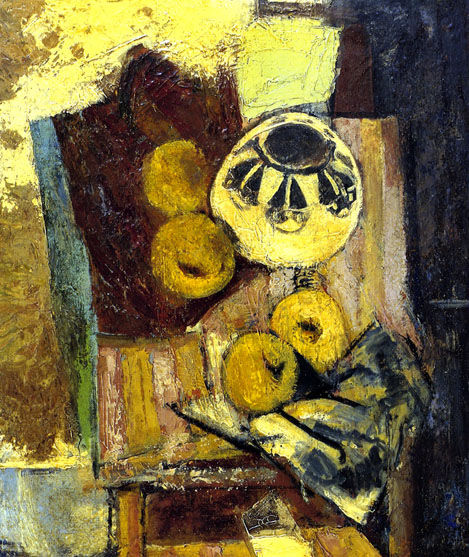
Cubist Still Life with Ceramic Bowl and Apples: ca 1927-29
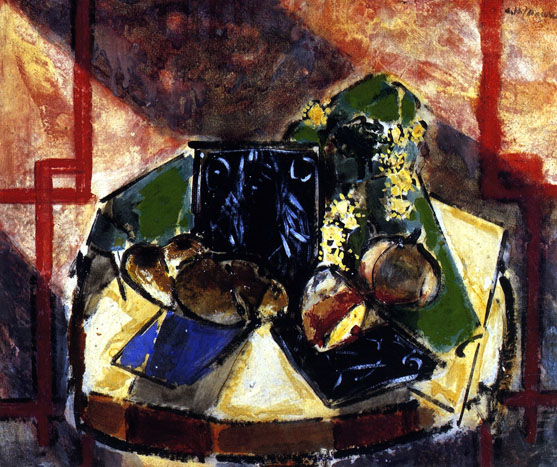
Cubist Still Life: ca 1928-32
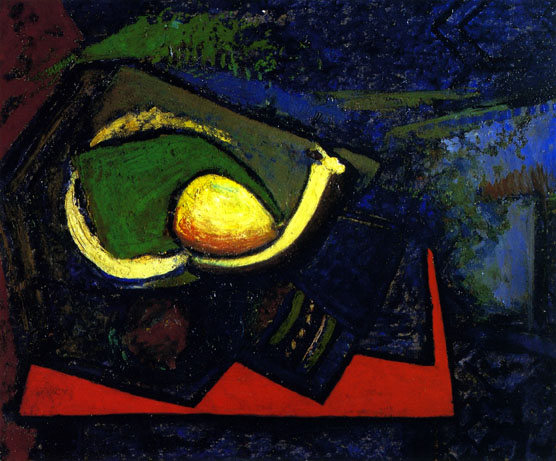
Cubist Still Life with Pear: ca 1928-32
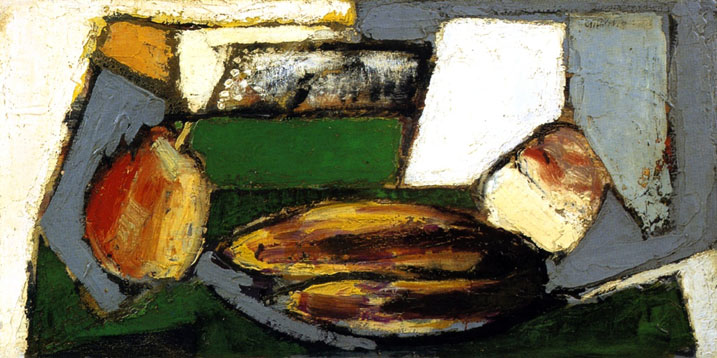
Cubist Still Life with Pears and Bananas: ca 1928-32
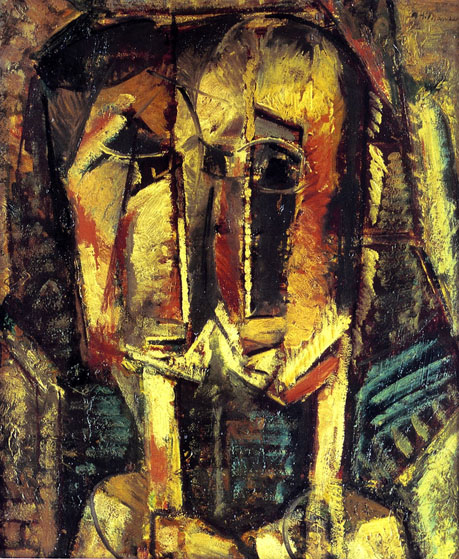
Cubist Two Heads: ca 1930
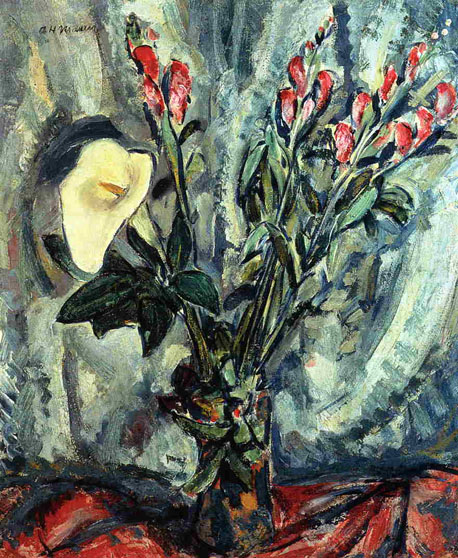
Floral Still Life with Calla Lily: ca 1926-28

Flowers Against a Blue Drape: 1926
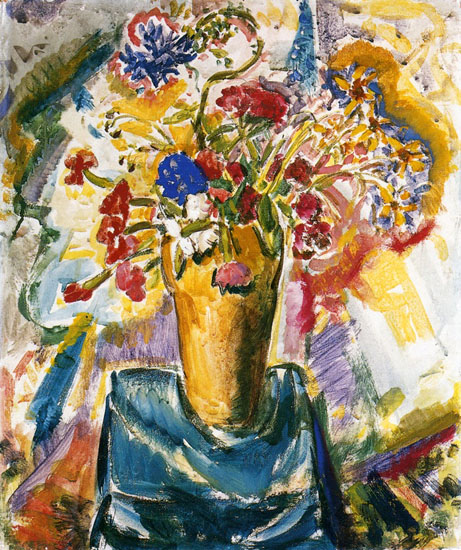
Flowers in a Vase: Unknown Date
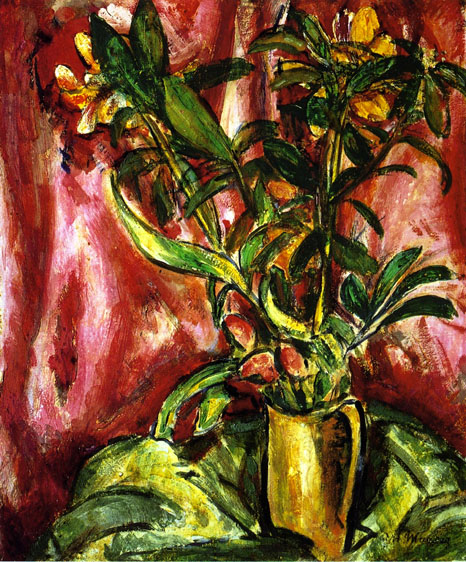
Flowers Red and Green: ca 1926
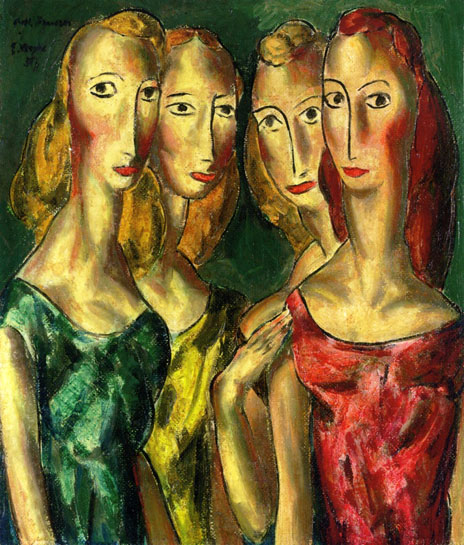
Four Sisters: 1931
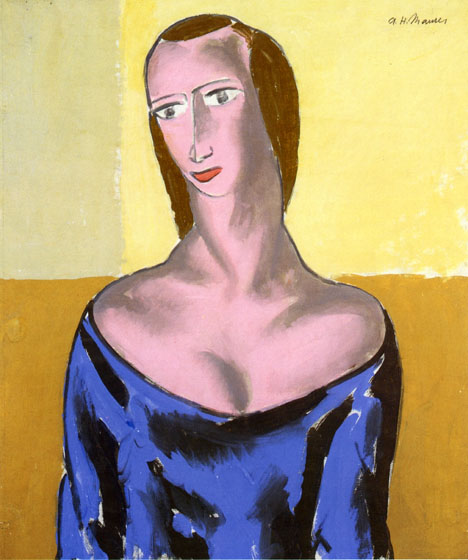
Girl: ca 1923
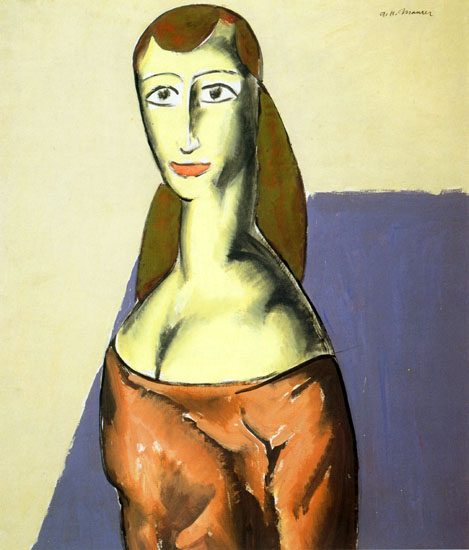
Girl: ca 1923
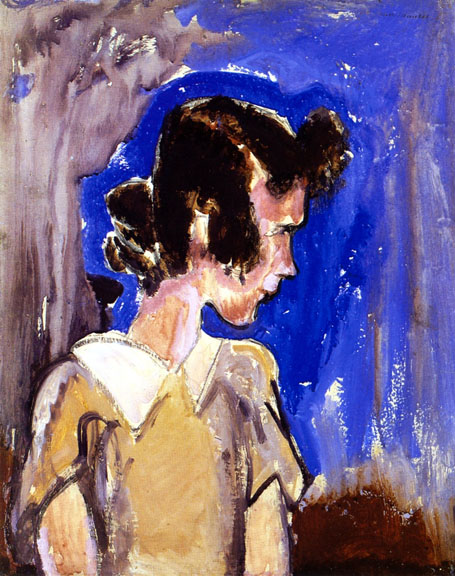
Girl in Blue: ca 1920-21

Girl with Landscape: ca 1924
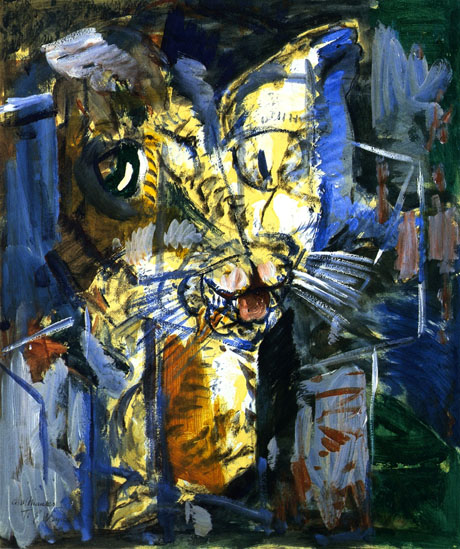
Head
(aka - Cat: ca 1931)
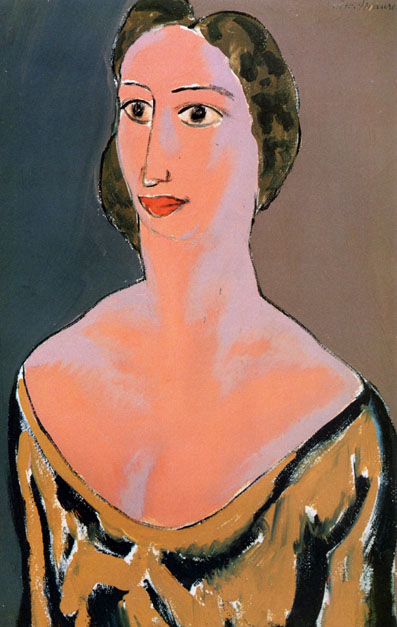
Head: ca 1920
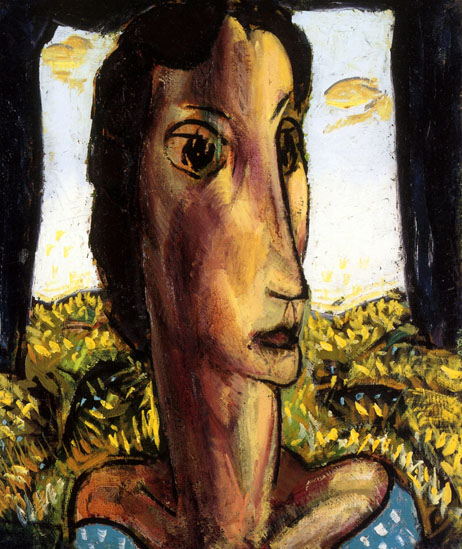
Head of a Girl: 1929
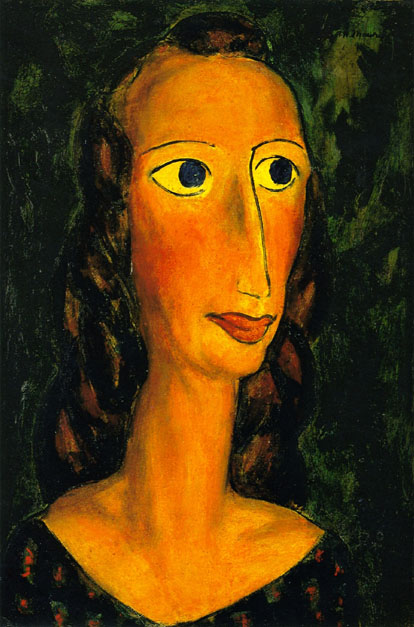
Head of a Girl: ca 1925
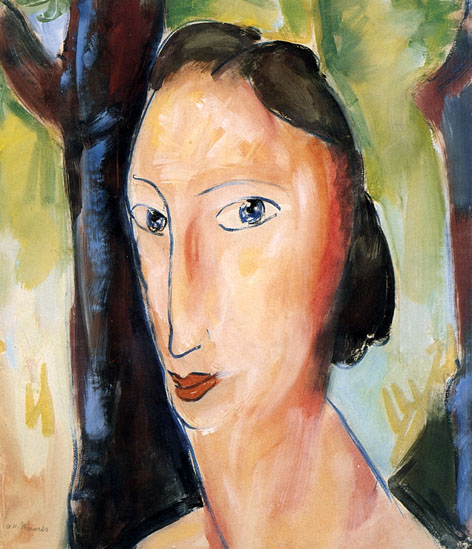
Head of a Woman: Date Unknown
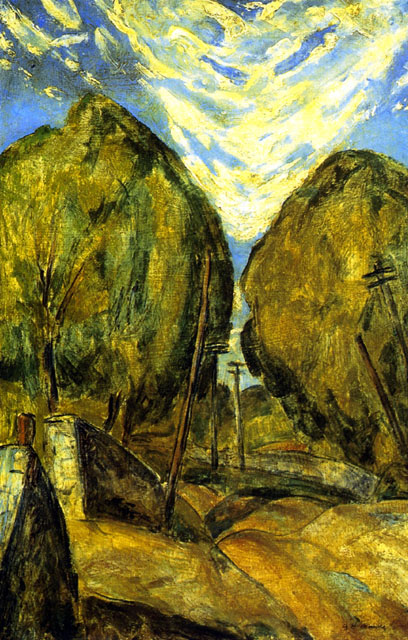
Landscape
(aka Entry into a Shady Brook): ca 1924

Landscape
(aka Purple Tree): ca 1925

Landscape: ca 1920-25
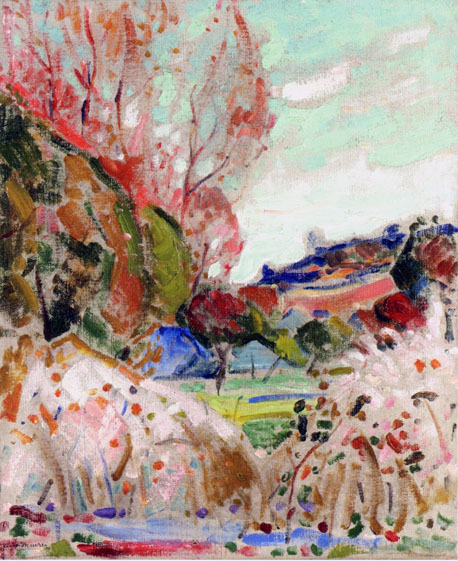
Landscape in Green and Pink: Date Unknown
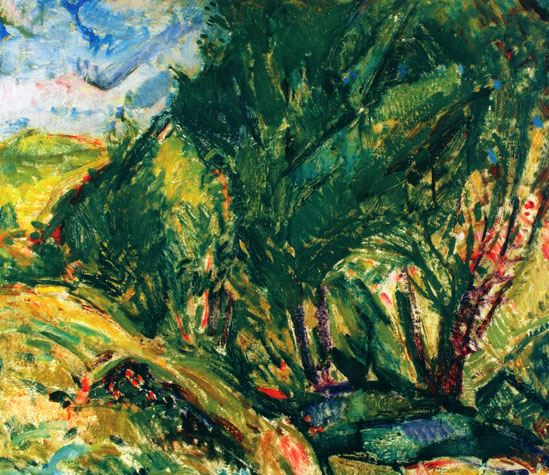
Landscape: Date Unknown
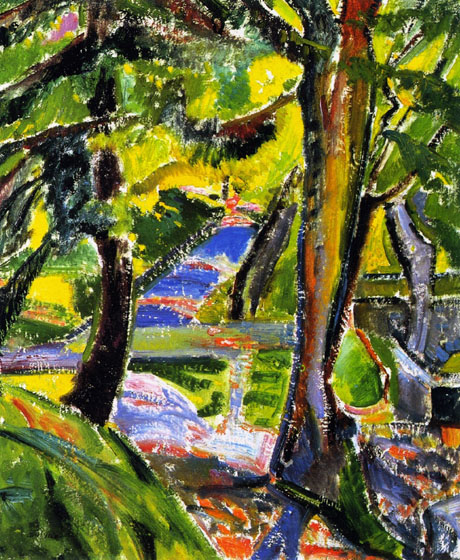
Landscape with Trees
(aka Marlboro Landscape): ca 1925
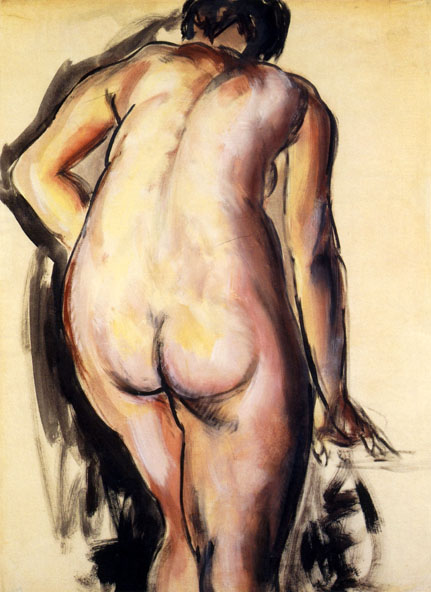
Figure: ca 1927-28
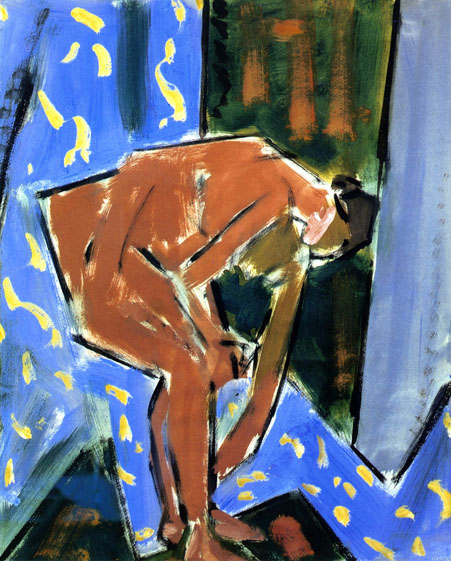
Nude Reading: 1928
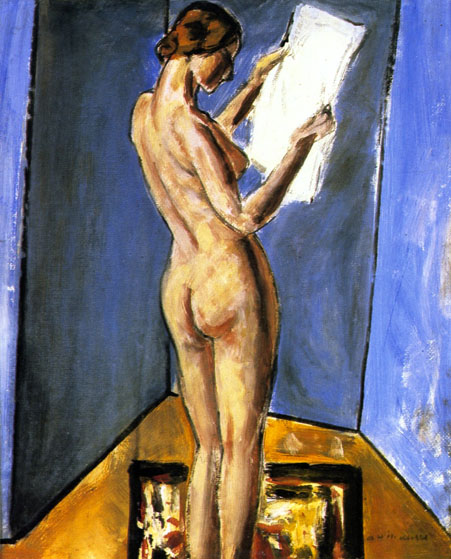
Nude Reading: ca 1927-28
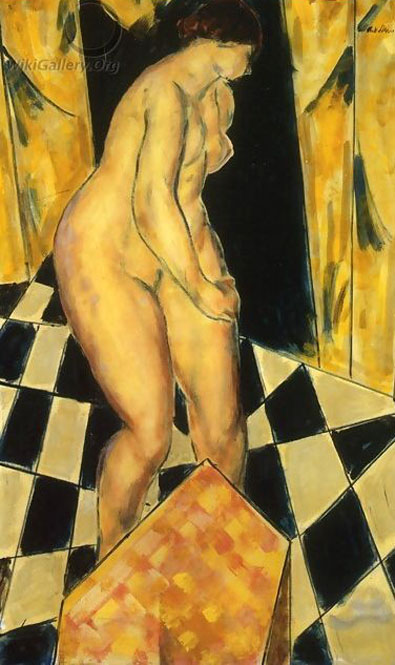
Nude Seated at Her Dressing Table: 1927
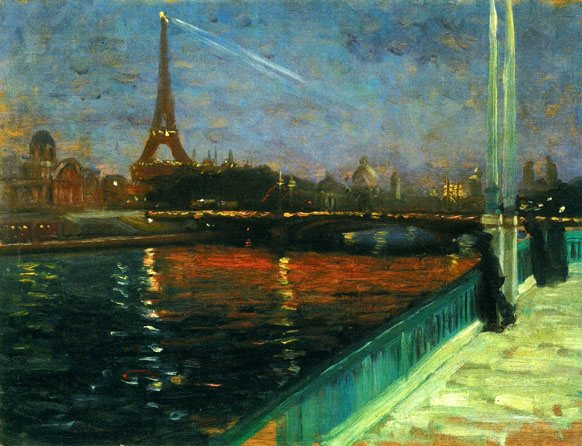
Paris, Nocturne: Date Unknown
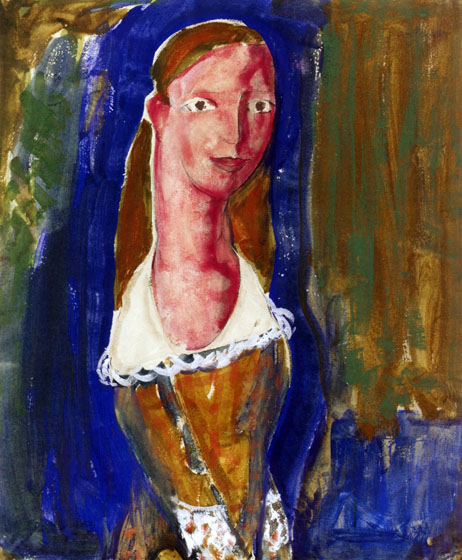
Portrait of a Girl: ca 1923

Portrait of a Girl in a Flowered Dress: ca 1924
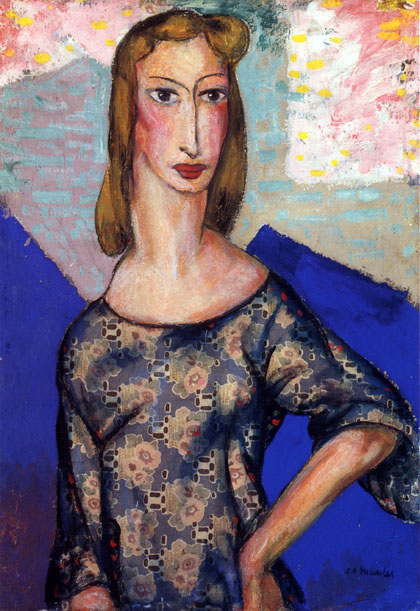
Portrait of a Girl in a Flowered Dress: ca 1924
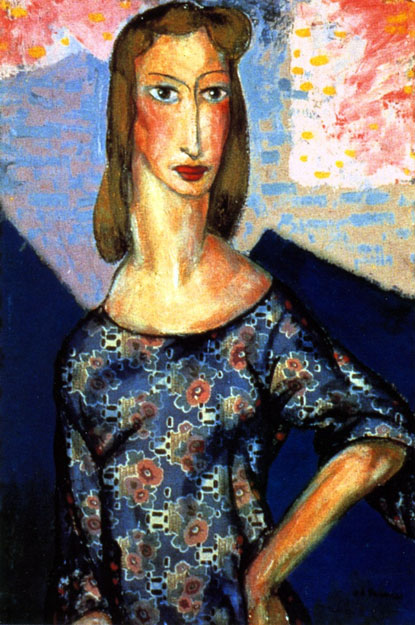
Portrait of a Girl in a Flowered Dress: ca 1924
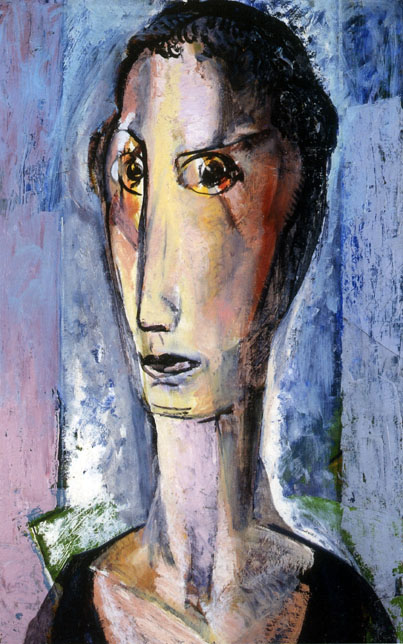
Portrait of a Girl with Gray Background: ca 1930
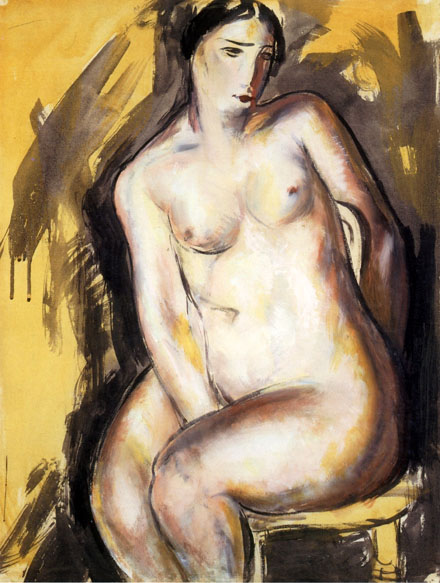
Seated Figure: ca 1927-28
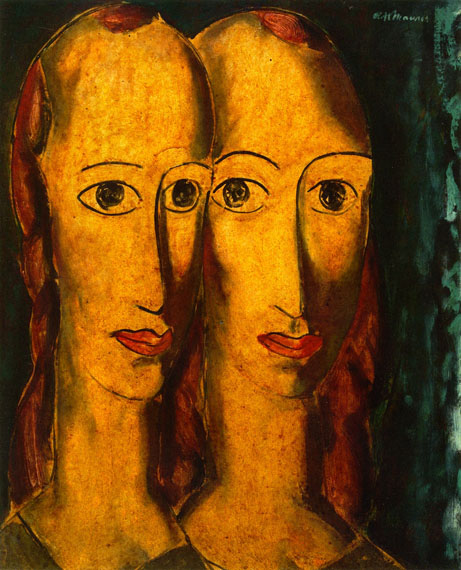
Sisters: ca 1925
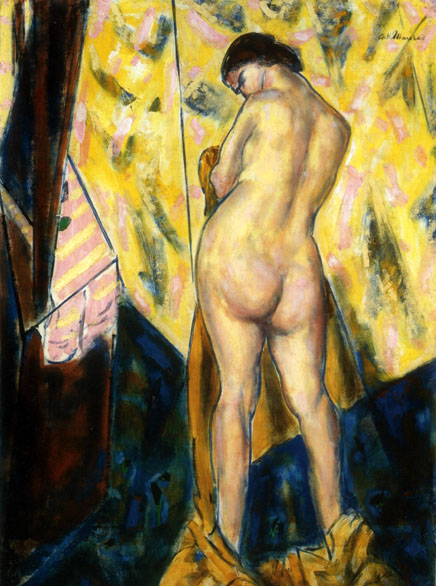
Standing Female Nude: 1928

Still Life Abstraction: Date Unknown
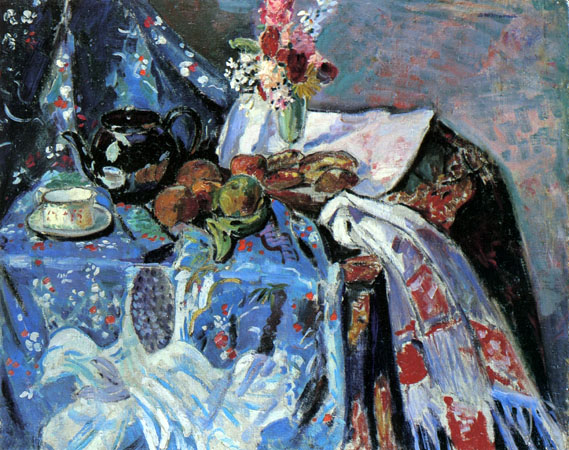
Still Life: Date Unknown
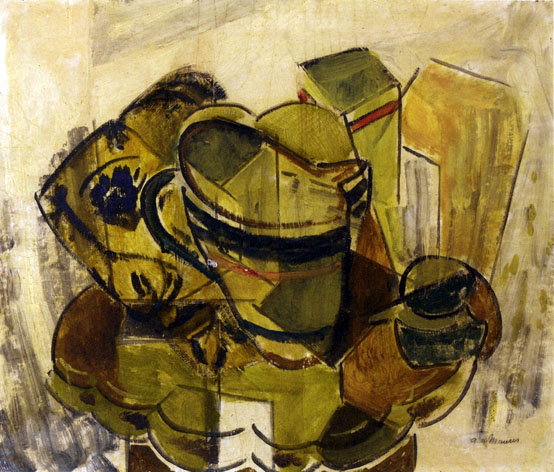
Still Life Number 7: ca 1930

Still Life of Flowers in a Bowl, Fruit and a Glass Bottle: Date_Unknown
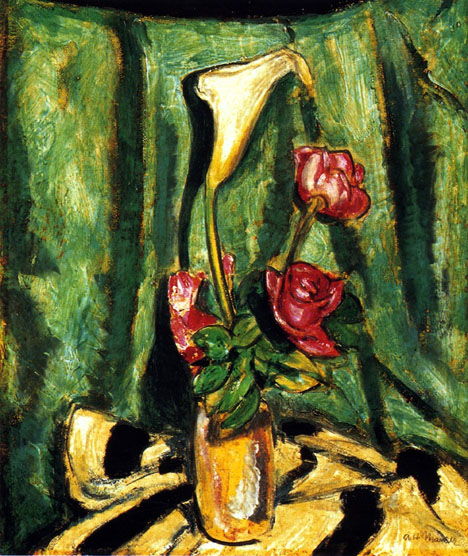
Still Life with Calla Lily and Roses: ca 1925-26

Still Life with Candlestick, Brass Bowl, and Yellow Drape: ca 1928-32
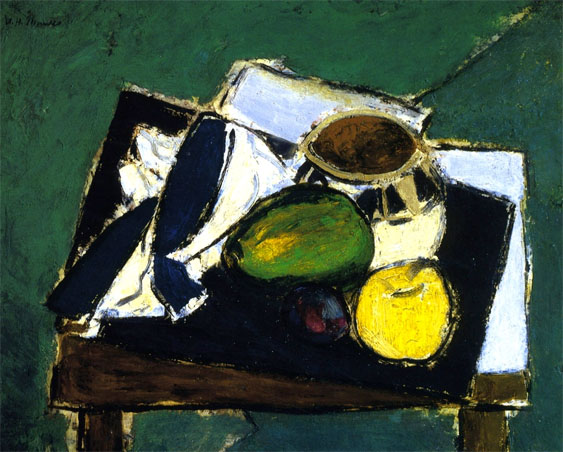
Still Life with Ceramic Bowl on Green Background: ca 1928-32
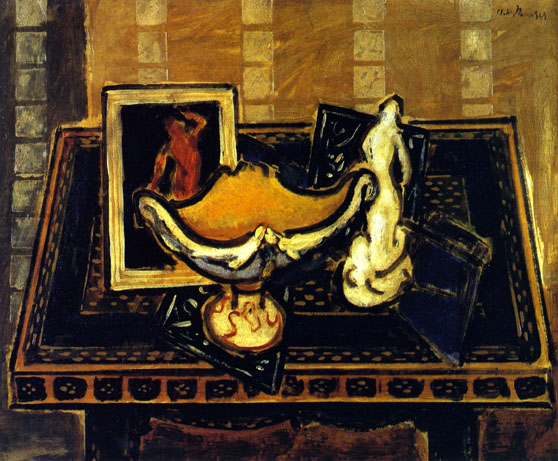
Still Life with Chalice and Statuette: ca 1928-32
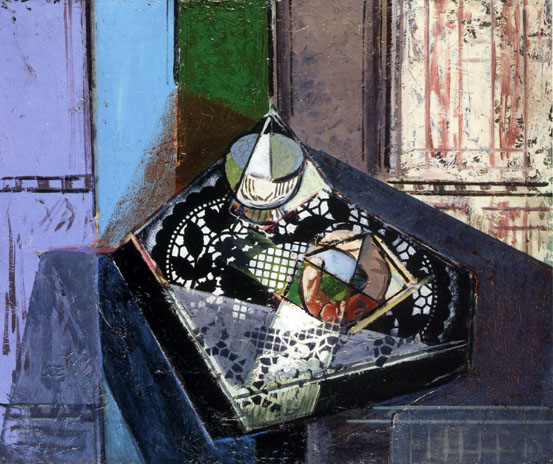
Still Life with Cup: 1929
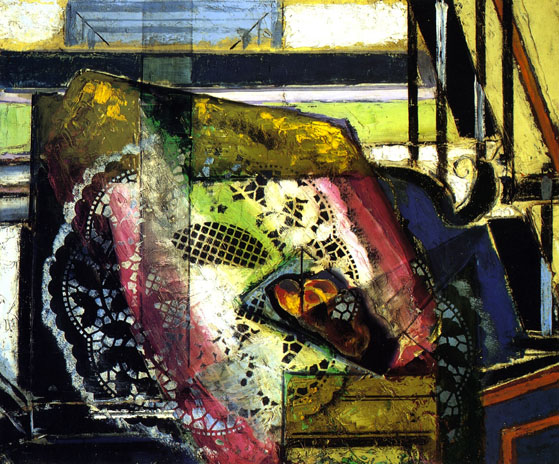
Still Life with Doily and Roll: ca 1928-32
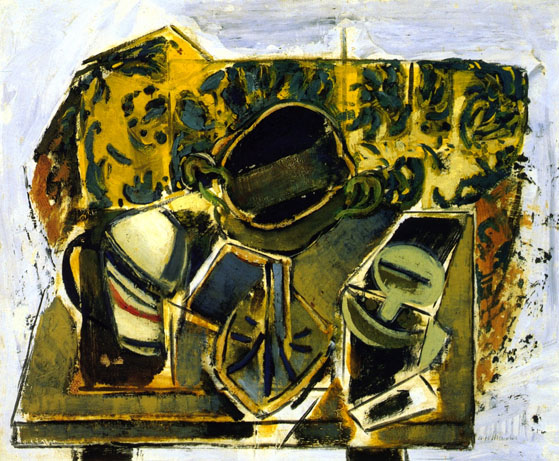
Still Life with Green Chalice ca 1928-32
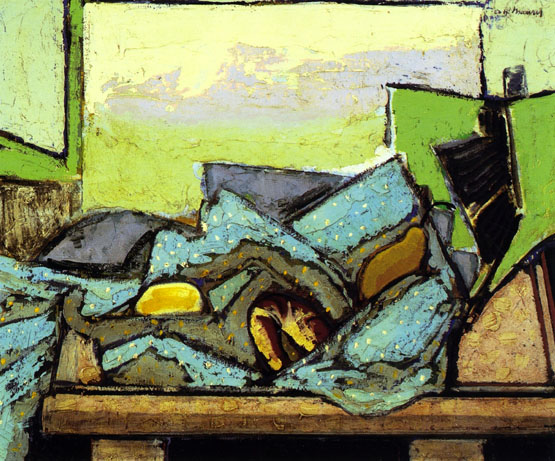
Still Life with Green Cloth: ca 1928-32
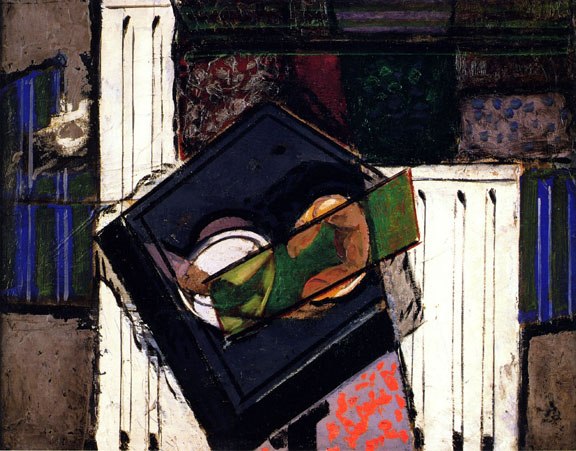
Still Life with Grey Table and White Columns: ca 1928-32
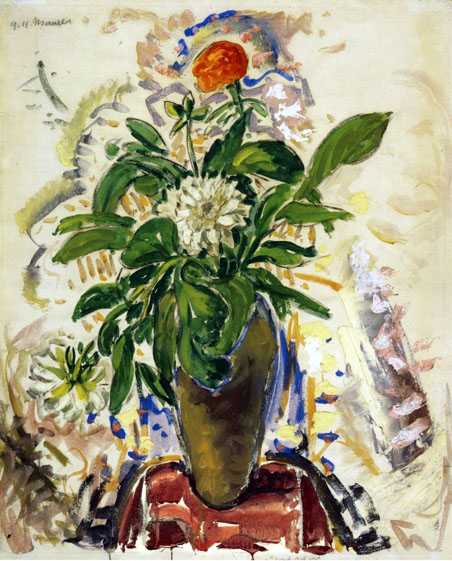
Still Life with Orange Carnation: ca 1926-28
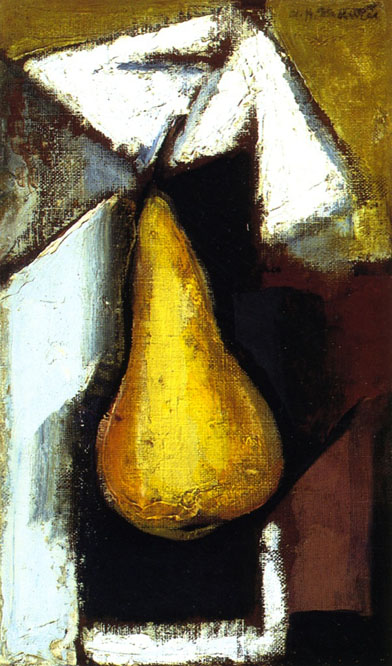
Still Life with Pear: ca 1928-32
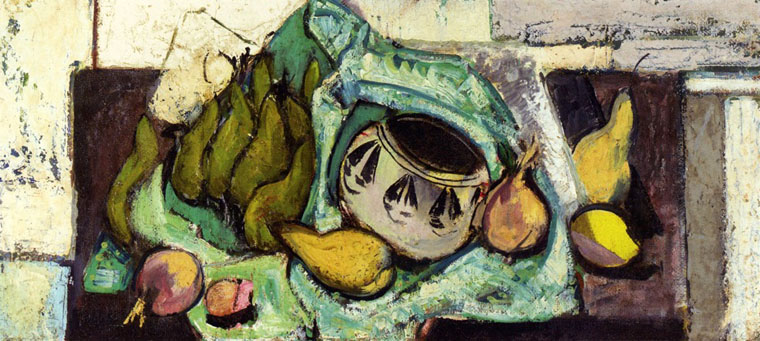
Still Life with Pears and Indian Bowl: 1928-30

Still Life with Pears: ca 1930-31
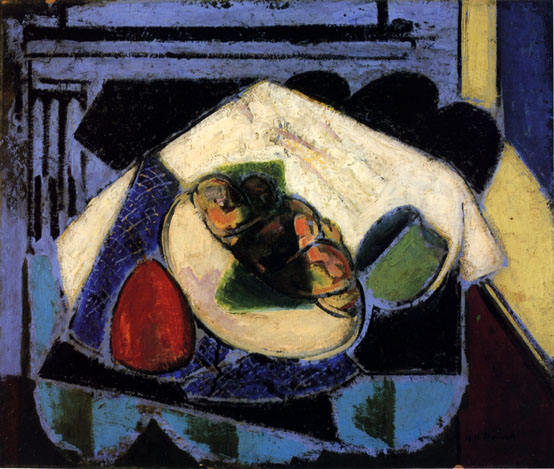
Still Life with Red Cheese: ca 1929-30

Still Life with Red Flowers: ca 1926
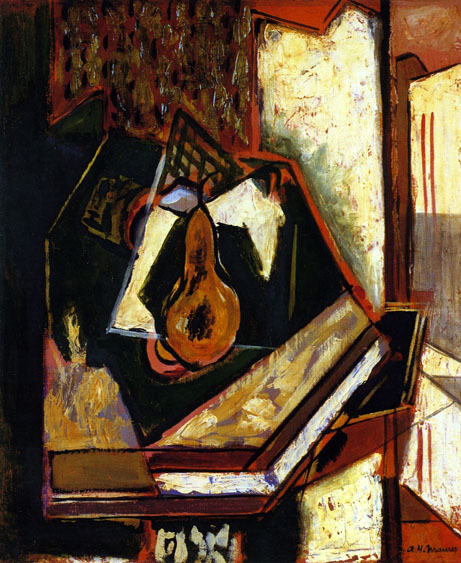
Still Life with Single Pear: ca 1930
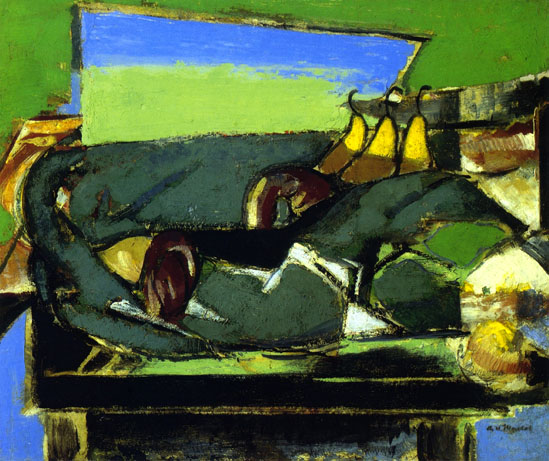
Still Life with Three Pears: ca 1930-32
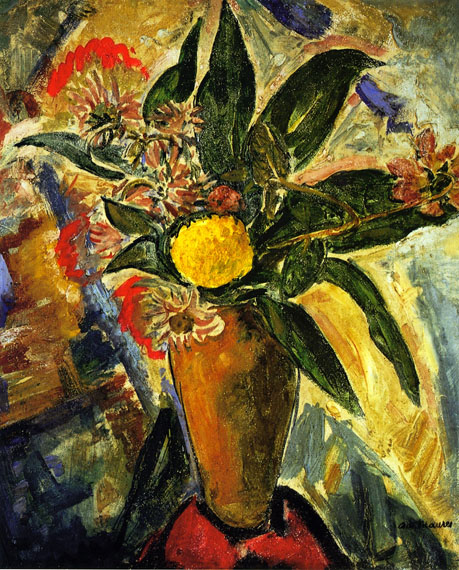
Still Life with Vase and Flowers: ca 1926
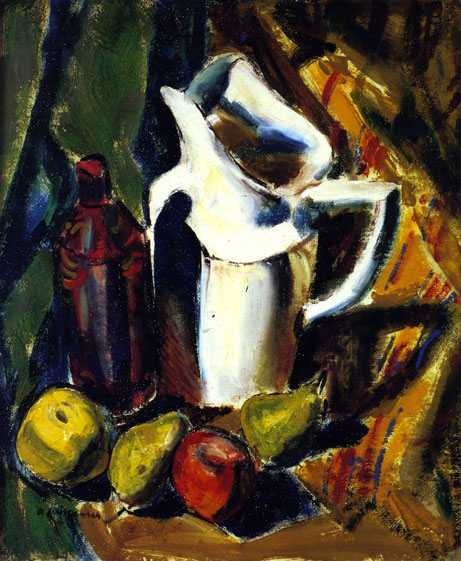
Still Life with White Pitcher: ca 1923
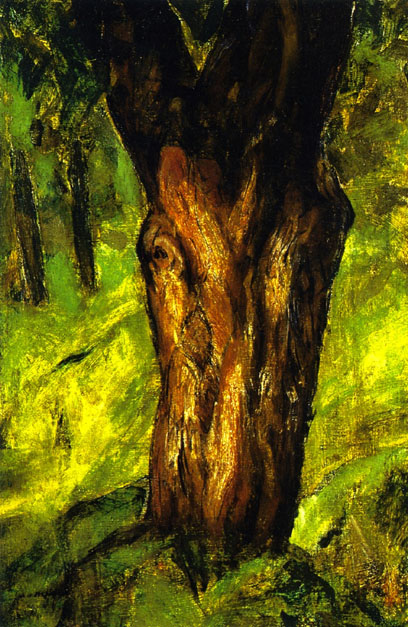
Tree: ca 1924
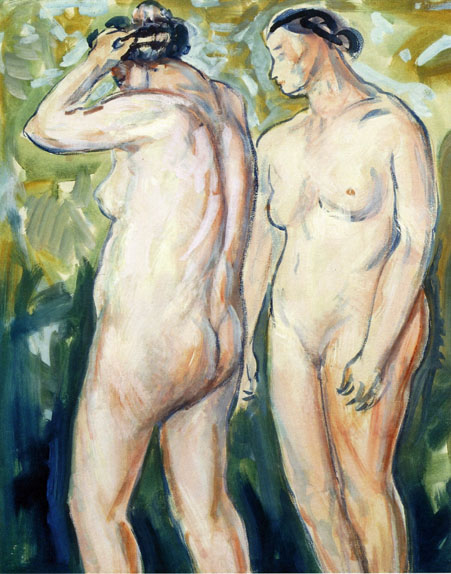
Two Figures: ca 1927-28
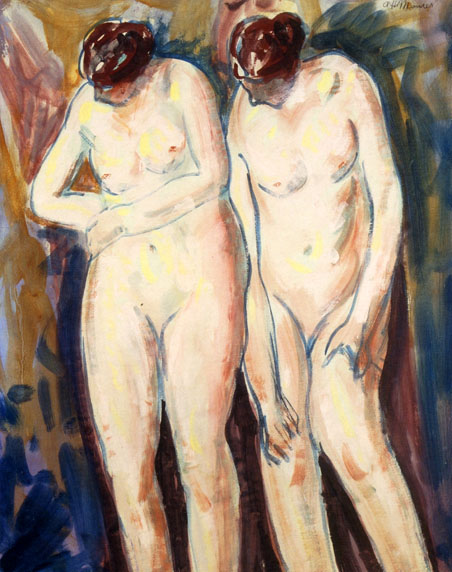
Two Figures: ca 1927-28

Two Figures: ca 1927-28

Two Heads: 1928-29

Two Heads: ca 1928
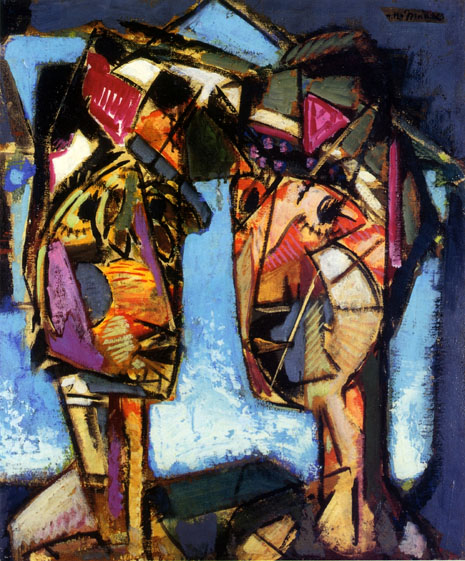
Two Heads:ca 1930
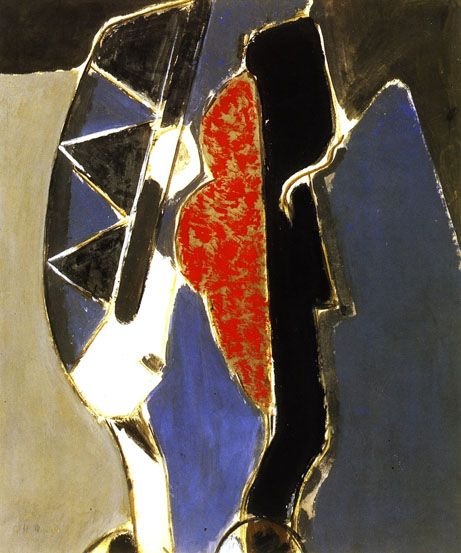
Two Heads: ca 1930-31

Two Heads with Yellow Background: 1928-29
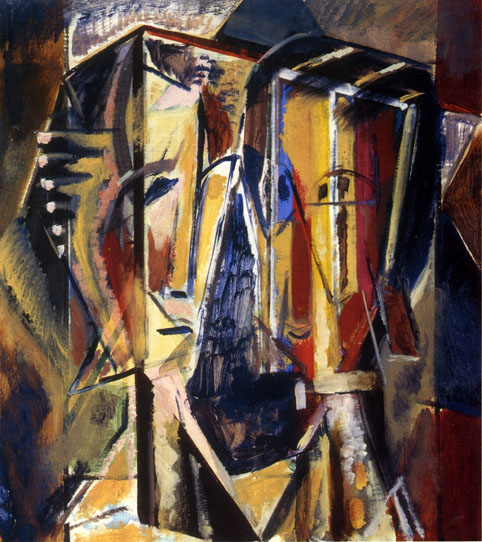
Two Heads with Yellow Background: 1928-30
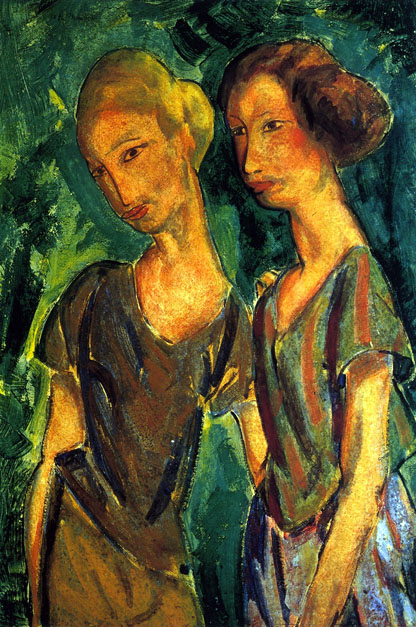
Two Sisters: ca 1921-23
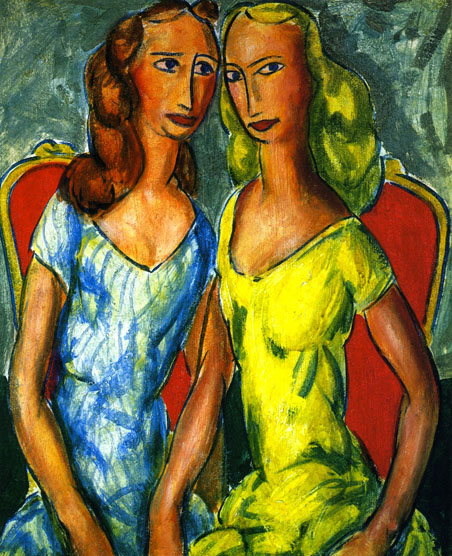
Two Sisters: ca 1924
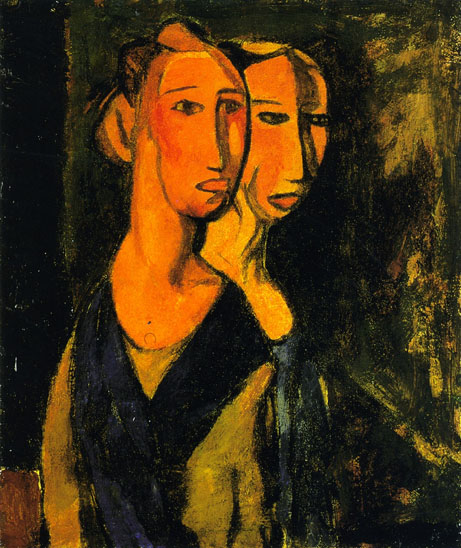
Two Sisters: ca 1930
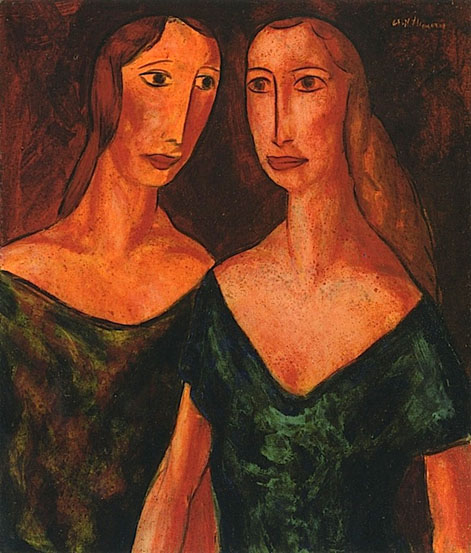
Two Women: Date Unknown
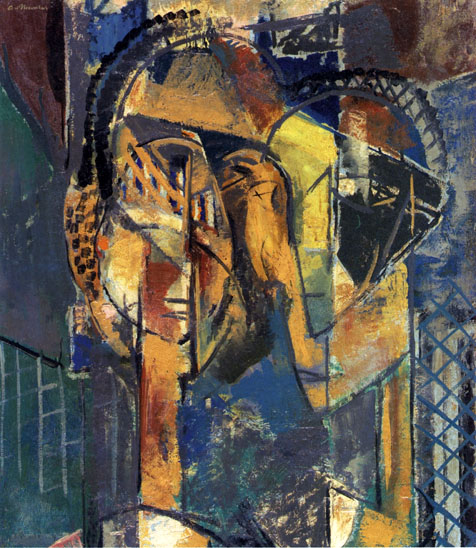
Two Women
(aka Two Heads): ca 1929-30
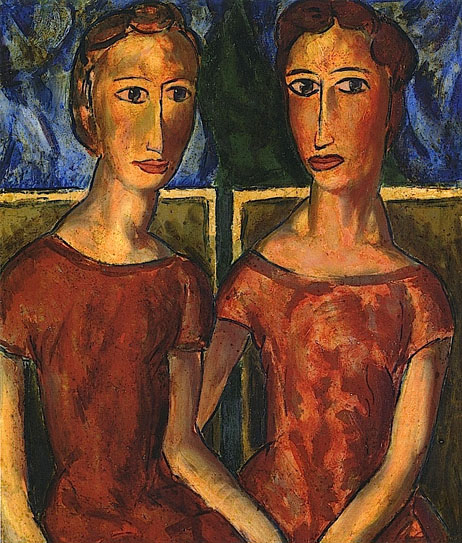
Two Women: Date Unknown
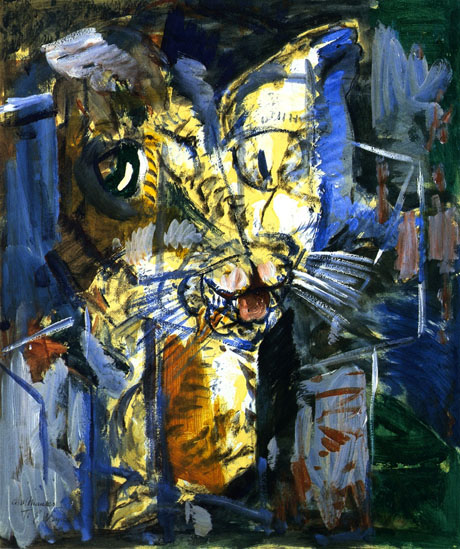
Untitled
(aka Cat): 1931
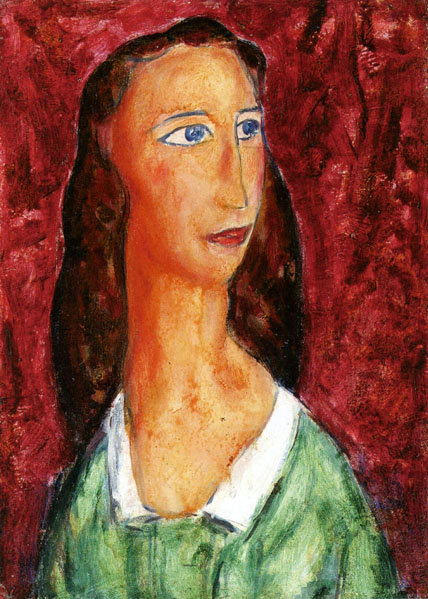
Woman in a Green Dress with White Collar: Date Unknown
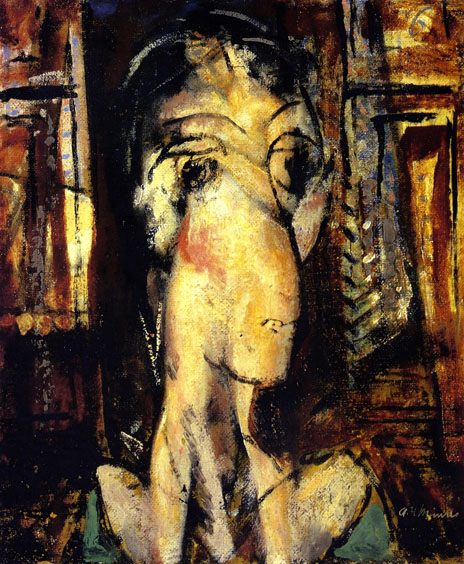
Woman with Raised Shoulders: ca 1930

Yellow Pear and Roll: ca 1920
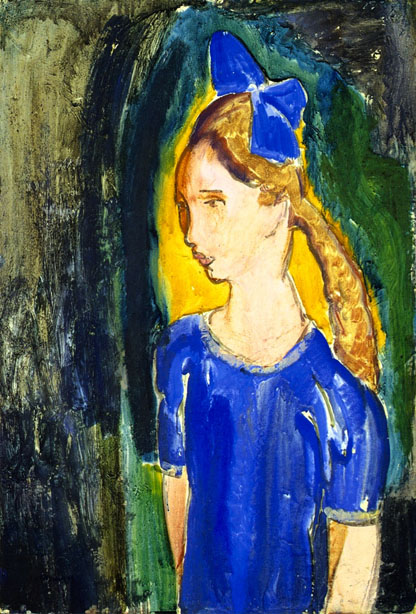
Young Girl with Blue Bow: ca 1920-25
Additionsl Sources:
From: Alfred Henry Maurer - The Athenaeum
From: Alfred Henry Maurer Online
I can't help but make a few comments about Alfred Henry Maurer's death. His story to me seems so tragic and I wonder about the human dynamics between father and son that led to the younger Maurer's suicide. Many of us realize the importance of the bond that develops between parent and child and how meaningful that relationsip becomes over a lifetime. There is much, I suppose, could be said about the estrangement between this father and son who both died in 1932. My father has been dead for 35 years and there was much about which we disagreed. Yet, he was a man who wanted me to discover who I was and to nurish those gifts which he knew I possessed and allow myself to discover the fruition of those talents. As I said before, the real human tragedy was that Louis couldn't have the same appreciation of his own son who shared such instinctive talent with his father.
~ Senex Magister
This page is the work of Senex Magister
Return to Pagina Artis
Return to Bruce and Bobbie's Main Page.
































































































































































